2
RESEARCH METHODOLOGY
42
5
MARKET OVERVIEW
Surging demand for advanced biosurgery solutions amid rising surgeries and innovative adhesive technologies.
63
5.2.1.1
INCREASING VOLUME OF SURGERIES AND GROWING PREVALENCE OF SEVERE TRAUMA INJURIES
5.2.1.2
RISING NEED FOR EFFECTIVE BLOOD LOSS MANAGEMENT
5.2.2.1
HIGH PRICE OF BIOSURGERY PRODUCTS AND SURGICAL PROCEDURES
5.2.3.1
RISING USE OF COMBINATION MATERIALS FOR ENHANCING PRODUCT EFFICACY
5.2.3.2
GROWING ADOPTION OF ADHESIVE DENTISTRY PROCEDURES
5.2.4.1
STRINGENT REGULATORY FRAMEWORK
5.2.4.2
SCARCITY OF SKILLED PERSONNEL FOR EFFECTIVE USE OF BIOSURGERY PRODUCTS
5.3.1.1
HEMOSTATIC & SEALANT BIOMATERIAL TECHNOLOGY
5.3.1.2
TISSUE ENGINEERING & REGENERATIVE MEDICINE TECHNOLOGY
5.3.2
COMPLEMENTARY TECHNOLOGIES
5.3.2.1
SURGICAL IMAGING & NAVIGATION TECHNOLOGY
5.3.2.2
STERILIZATION & PRESERVATION TECHNOLOGY
5.3.3
ADJACENT TECHNOLOGIES
5.3.3.1
3D PRINTING TECHNOLOGY
5.3.3.2
MINIMALLY INVASIVE TECHNOLOGY
5.4.1
GROWING PREFERENCE FOR GELATIN-BASED ADHESIVES & HYDROGELS IN SURGICAL PROCEDURES
5.4.2
USE OF NANOTECHNOLOGY FOR DEVELOPING NEXT-GENERATION ADHESIVES
5.7
SUPPLY CHAIN ANALYSIS
5.8.1
IMPORT DATA FOR HS CODE 300610, 2019–2024
5.8.2
EXPORT DATA FOR HS CODE 300610, 2019–2024
5.9
PORTER’S FIVE FORCES ANALYSIS
5.9.1
THREAT OF NEW ENTRANTS
5.9.2
THREAT OF SUBSTITUTES
5.9.3
BARGAINING POWER OF BUYERS
5.9.4
BARGAINING POWER OF SUPPLIERS
5.9.5
INTENSITY OF COMPETITIVE RIVALRY
5.10
KEY STAKEHOLDERS & BUYING CRITERIA
5.10.1
KEY STAKEHOLDERS IN BUYING PROCESS
5.10.2
KEY BUYING CRITERIA
5.11.1
REGULATORY BODIES, GOVERNMENT AGENCIES, AND OTHER ORGANIZATIONS
5.11.2
REGULATORY ANALYSIS
5.11.2.5
MIDDLE EAST & AFRICA
5.12.1
INSIGHTS: JURISDICTION AND TOP APPLICANT ANALYSIS
5.13.1
AVERAGE SELLING PRICE TREND OF BIOSURGERY PRODUCTS, BY KEY PLAYER, 2022–2024
5.13.2
AVERAGE SELLING PRICE TREND OF BIOSURGERY PRODUCTS, BY REGION, 2022–2024
5.14
KEY CONFERENCES & EVENTS, 2025–2026
5.15
ADJACENT MARKET ANALYSIS
5.15.1
ADHESION BARRIERS MARKET
5.16
UNMET NEEDS/END-USER EXPECTATIONS
5.17
TRENDS/DISRUPTIONS IMPACTING CUSTOMER’S BUSINESS
5.18
INVESTMENT & FUNDING SCENARIO
5.19
IMPACT OF AI/GEN AI ON BIOSURGERY MARKET
5.20
IMPACT OF 2025 US TARIFF ON BIOSURGERY MARKET
5.20.3
PRICE IMPACT ANALYSIS
5.20.4
IMPACT ON COUNTRIES/REGIONS
5.20.5
IMPACT ON END-USE INDUSTRIES
6
BIOSURGERY MARKET, BY PRODUCT
Market Size & Growth Rate Forecast Analysis to 2030 in USD Million | 70 Data Tables
95
6.2
BONE-GRAFT SUBSTITUTES
6.2.1
DEMINERALIZED BONE MATRIX
6.2.1.1
RISING VOLUME OF SPINAL FUSION, JOINT RECONSTRUCTION, AND REPLACEMENT SURGERIES TO DRIVE SEGMENT
6.2.2
SYNTHETIC BONE GRAFTS
6.2.2.1
HIGH COMPRESSIVE STRENGTH, OSTEOCONDUCTIVE PROPERTIES, AND MINIMAL RISK OF DISEASE TRANSMISSION TO FUEL SEGMENT GROWTH
6.2.3
BONE MORPHOGENETIC PROTEINS
6.2.3.1
INCREASING PREVALENCE OF SPINAL DEFORMITIES, DISC DEGENERATION, TRAUMA, AND SPORT-RELATED INJURIES TO PROPEL SEGMENT GROWTH
6.2.4
OTHER BONE-GRAFT SUBSTITUTES
6.3
SURGICAL SEALANTS & ADHESIVES
6.3.1
NATURAL/BIOLOGICAL SURGICAL SEALANTS & ADHESIVES
6.3.1.1
NATURAL/BIOLOGICAL SURGICAL SEALANTS & ADHESIVES, BY TYPE
6.3.1.2
NATURAL/BIOLOGICAL SURGICAL SEALANTS & ADHESIVES, BY ORIGIN
6.3.2
SYNTHETIC & SEMI-SYNTHETIC SURGICAL SEALANTS & ADHESIVES
6.3.2.1
PEG HYDROGEL-BASED SEALANTS & ADHESIVES
6.3.2.2
CYANOACRYLATE-BASED SEALANTS & ADHESIVES
6.3.2.3
URETHANE-BASED SEALANTS & ADHESIVES
6.3.2.4
OTHER SYNTHETIC & SEMI-SYNTHETIC SURGICAL SEALANTS & ADHESIVES
6.4.1
SYNTHETIC ADHESION BARRIERS
6.4.1.1
HYALURONIC ACID-BASED ADHESION BARRIERS
6.4.1.2
REGENERATED CELLULOSE-BASED ADHESION BARRIERS
6.4.1.3
PEG-BASED ADHESION BARRIERS
6.4.1.4
OTHER SYNTHETIC ADHESION BARRIERS
6.4.2
NATURAL ADHESION BARRIERS
6.4.2.1
COLLAGEN & PROTEIN ADHESION BARRIERS
6.4.2.2
FIBRIN-BASED ADHESION BARRIERS
6.5
STAPLE-LINE REINFORCEMENT AGENTS
6.5.1
RISING VOLUME OF COMPLEX SURGICAL PROCEDURRES TO DRIVE MARKET
6.6
SOFT-TISSUE ATTACHMENTS
6.6.1.1
INCREASING DEMAND FOR SAFE AND COST-EFFECTIVE SOFT TISSUE REINFORCEMENT TO DRIVE SEGMENT
6.7.1
THROMBIN-BASED HEMOSTATIC AGENTS
6.7.1.1
RISING DEMAND FOR SAFER AND FAST-ACTING CLOTTING AGENTS TO DRIVE GROWTH OF THROMBIN-BASED HEMOSTATS
6.7.2
OXIDIZED REGENERATED CELLULOSE-BASED HEMOSTATIC AGENTS
6.7.2.1
RISING ADOPTION OF PLANT-BASED AND ABSORBABLE HEMOSTATS TO PROPEL SEGMENT GROWTH
6.7.3
COMBINATION HEMOSTATIC AGENTS
6.7.3.1
SUPERIOR EFFICACY IN COMPLEX BLEEDING CONTROL TO DRIVE ADOPTION OF COMBINATION HEMOSTATIC AGENTS GLOBALLY
7
BIOSURGERY MARKET, BY APPLICATION
Market Size & Growth Rate Forecast Analysis to 2030 in USD Million | 10 Data Tables
157
7.2.1
INCREASING INCIDENCE OF SPORTS INJURIES AND GROWING PREVALENCE OF OSTEOPOROSIS TO PROPEL MARKET GROWTH
7.3.1
HIGH GERIATRIC POPULATION AND INCREASED PREVALENCE OF OBESITY TO FUEL DEMAND FOR BARIATRIC INTERVENTIONS
7.4.1
GROWING PREVALENCE OF NEUROLOGICAL DISORDERS TO AUGMENT MARKET GROWTH
7.5
CARDIOVASCULAR SURGERY
7.5.1
BIOSURGERY PRODUCTS TO REPLACE CONVENTIONAL SUTURE-BASED METHODS IN CARDIOVASCULAR PROCEDURES
7.6
RECONSTRUCTIVE SURGERY
7.6.1
INCREASING FACIAL COSMETIC SURGERIES AND BREAST RECONSTRUCTION PROCEDURES TO PROPEL MARKET GROWTH
7.7
GYNECOLOGICAL SURGERY
7.7.1
COMPLEXITY OF GYNECOLOGICAL PROCEDURES TO FUEL DEMAND FOR ADVANCED BIOSURGICAL PRODUCTS
7.8.1
USE OF BIOSURGERY PRODUCTS IN COMPLEX RECONSTRUCTIVE UROLOGICAL SURGERIES TO STIMULATE SEGMENT GROWTH
7.9.1
RISING INCIDENCE OF PULMONARY CHRONIC DISEASES TO SPUR MARKET GROWTH
8
BIOSURGERY MARKET, BY END USER
Market Size & Growth Rate Forecast Analysis to 2030 in USD Million | 5 Data Tables
173
8.2.1
RISING NUMBER OF REIMBURSED INPATIENT PROCEDURES TO DRIVE POPULARITY OF HOSPITALS FOR SURGERIES
8.3.1
QUICKER CONSULTATION SERVICES AND MINIMAL PATIENT STAYS TO FAVOR MARKET GROWTH
8.4
AMBULATORY SURGICAL CENTERS
8.4.1
RISING DEMAND FOR COST-EFFECTIVE SAME-DAY SURGERIES TO AUGMENT MARKET GROWTH
9
BIOSURGERY MARKET, BY REGION
Comprehensive coverage of 8 Regions with country-level deep-dive of 14 Countries | 342 Data Tables.
180
9.2.1
MACROECONOMIC OUTLOOK FOR NORTH AMERICA
9.2.2.1
US TO DOMINATE NORTH AMERICAN BIOSURGERY MARKET DURING FORECAST PERIOD
9.2.3.1
GROWING PREVALENCE OF CHRONIC DISEASES TO DRIVE MARKET
9.3.1
MACROECONOMIC OUTLOOK FOR EUROPE
9.3.2.1
ROBUST HEALTHCARE INVESTMENTS AND IMPROVED INFRASTRUCTURE TO SUPPORT ADOPTION OF ADVANCED SURGICAL TECHNOLOGIES
9.3.3.1
RISE IN POPULARITY OF COSMETIC AND RECONSTRUCTIVE SURGERIES TO FUEL MARKET GROWTH
9.3.4.1
PRESENCE OF WELL-ESTABLISHED HEALTHCARE SYSTEM AND HIGH GERIATRIC POPULATION TO BOOST MARKET GROWTH
9.3.5.1
INCREASING SURGICAL VOLUME TO FUEL MARKET GROWTH
9.3.6.1
RISING SURGICAL DEMAND TO BOOST NEED FOR BIOSURGERY PRODUCTS
9.4.1
MACROECONOMIC OUTLOOK FOR ASIA PACIFIC
9.4.2.1
INCREASING NUMBER OF DOMESTIC BIOSURGERY AND MEDICAL DEVICE MANUFACTURERS TO AID MARKET GROWTH
9.4.3.1
RISING HEALTHCARE AWARENESS AND FAVORABLE GOVERNMENT SUPPORT TO STIMULATE MARKET GROWTH
9.4.4.1
ADVANCED HEALTHCARE SYSTEM AND HIGH GERIATRIC POPULATION TO SPUR MARKET GROWTH
9.4.5.1
RISING NUMBER OF COSMETIC SURGERIES AND GROWING ADOPTION OF INNOVATIVE MEDICAL TECHNOLOGIES TO DRIVE MARKET
9.4.6.1
WELL-ESTABLISHED HEALTHCARE SYSTEM AND HIGH GOVERNMENT MEDICAL EXPENDITURE TO FAVOR MARKET GROWTH
9.4.7
REST OF ASIA PACIFIC
9.5.1
MACROECONOMIC OUTLOOK FOR LATIN AMERICA
9.5.2.1
RAPIDLY AGING POPULATION AND HIGH PREVALENCE OF CHRONIC DISEASES TO SUPPORT MARKET GROWTH
9.5.3.1
ENHANCED FOCUS ON MEDICAL TOURISM TO DRIVE MARKET
9.5.4
REST OF LATIN AMERICA
9.6.1
MACROECONOMIC OUTLOOK FOR MIDDLE EAST & AFRICA
9.6.2.1
RISING PREVALENCE OF CHRONIC DISEASES TO DRIVE MARKET
9.6.3
REST OF MIDDLE EAST & AFRICA
10
COMPETITIVE LANDSCAPE
Discover strategic dominance and emerging leaders shaping the biosurgery market landscape.
332
10.2
KEY PLAYER STRATEGIES/RIGHT TO WIN
10.2.1
OVERVIEW OF STRATEGIES ADOPTED BY KEY PLAYERS IN BIOSURGERY MARKET
10.3
REVENUE ANALYSIS, 2020–2024
10.4
MARKET SHARE ANALYSIS, 2024
10.5
COMPANY EVALUATION MATRIX: KEY PLAYERS, 2024
10.5.5
COMPANY FOOTPRINT: KEY PLAYERS, 2024
10.5.5.1
COMPANY FOOTPRINT
10.5.5.2
REGION FOOTPRINT
10.5.5.3
PRODUCT FOOTPRINT
10.5.5.4
APPLICATION FOOTPRINT
10.5.5.5
END-USER FOOTPRINT
10.6
COMPANY EVALUATION MATRIX: STARTUPS/SMES, 2024
10.6.1
PROGRESSIVE COMPANIES
10.6.2
RESPONSIVE COMPANIES
10.6.5
COMPETITIVE BENCHMARKING: STARTUPS/SMES, 2024
10.6.5.1
DETAILED LIST OF KEY STARTUPS/SMES
10.6.5.2
COMPETITIVE BENCHMARKING OF KEY STARTUPS/SMES
10.7
COMPANY VALUATION & FINANCIAL METRICS
10.8
BRAND/PRODUCT COMPARISON
10.9
COMPETITIVE SCENARIO
10.9.1
PRODUCT LAUNCHES & APPROVALS
11
COMPANY PROFILES
In-depth Company Profiles of Leading Market Players with detailed Business Overview, Product and Service Portfolio, Recent Developments, and Unique Analyst Perspective (MnM View)
350
11.1.1.1
BUSINESS OVERVIEW
11.1.1.2
PRODUCTS OFFERED
11.1.3
BECTON, DICKINSON AND COMPANY (BD)
11.1.6
INTEGRA LIFESCIENCES CORPORATION
11.1.7
COMMONWEALTH SERUM LABORATORIES LIMITED (CSL)
11.1.13
KUROS BIOSCIENCES
11.1.14
ORTHOFIX MEDICAL INC.
11.2.3
MERIL LIFE SCIENCES PVT. LTD.
11.2.5
SAMYANG HOLDINGS CORPORATION
11.2.6
AROA BIOSURGERY LIMITED
11.2.8
ADVANCED MEDICAL SOLUTIONS GROUP PLC
11.2.9
BIOCER ENTWICKLUNGS-GMBH
12.2
KNOWLEDGESTORE: MARKETSANDMARKETS’ SUBSCRIPTION PORTAL
12.3
CUSTOMIZATION OPTIONS
TABLE 1
BIOSURGERY MARKET: INCLUSIONS & EXCLUSIONS
TABLE 2
STANDARD CURRENCY CONVERSION RATES
TABLE 3
BIOSURGERY MARKET: STUDY ASSUMPTIONS
TABLE 4
BIOSURGERY MARKET: RISK ANALYSIS
TABLE 5
IMPORT DATA FOR HS CODE 300610, BY COUNTRY, 2019–2024 (USD THOUSAND)
TABLE 6
EXPORT DATA FOR HS CODE 300610, BY COUNTRY, 2019–2024 (USD THOUSAND)
TABLE 7
BIOSURGERY MARKET: PORTER’S FIVE FORCES
TABLE 8
INFLUENCE OF STAKEHOLDERS ON BUYING PROCESS OF TOP THREE BIOSURGERY PRODUCTS
TABLE 9
KEY BUYING CRITERIA FOR BIOSURGERY PRODUCTS
TABLE 10
NORTH AMERICA: REGULATORY BODIES, GOVERNMENT AGENCIES, AND OTHER ORGANIZATIONS
TABLE 11
EUROPE: REGULATORY BODIES, GOVERNMENT AGENCIES, AND OTHER ORGANIZATIONS
TABLE 12
ASIA PACIFIC: REGULATORY BODIES, GOVERNMENT AGENCIES, AND OTHER ORGANIZATIONS
TABLE 13
LATIN AMERICA: REGULATORY BODIES, GOVERNMENT AGENCIES, AND OTHER ORGANIZATIONS
TABLE 14
MIDDLE EAST & AFRICA: REGULATORY BODIES, GOVERNMENT AGENCIES, AND OTHER ORGANIZATIONS
TABLE 15
AVERAGE SELLING PRICE TREND OF BIOSURGERY PRODUCTS, BY KEY PLAYER, 2022–2024 (USD)
TABLE 16
AVERAGE SELLING PRICE TREND OF BIOSURGERY PRODUCTS, BY REGION, 2022–2024 (USD)
TABLE 17
BIOSURGERY MARKET: DETAILED LIST OF KEY CONFERENCES & EVENTS, JANUARY 2025–DECEMBER 2026
TABLE 18
BIOSURGERY MARKET: UNMET NEEDS/END-USER EXPECTATIONS
TABLE 19
US-ADJUSTED RECIPROCAL TARIFF RATES
TABLE 20
KEY PRODUCT-RELATED TARIFF EFFECTIVE FOR BIOSURGERY PRODUCTS
TABLE 21
BIOSURGERY MARKET, BY COUNTRY, 2023–2030 (USD MILLION)
TABLE 22
BIOSURGERY MARKET FOR BONE-GRAFT SUBSTITUTES, BY TYPE, 2023–2030 (USD MILLION)
TABLE 23
BIOSURGERY MARKET FOR BONE-GRAFT SUBSTITUTES, BY COUNTRY, 2023–2030 (USD MILLION)
TABLE 24
MAJOR DEMINERALIZED BONE MATRIX PRODUCTS AVAILABLE IN MARKET
TABLE 25
DEMINERALIZED BONE MATRIX MARKET, BY COUNTRY, 2023–2030 (USD MILLION)
TABLE 26
MAJOR SYNTHETIC BONE GRAFTS AVAILABLE IN MARKET
TABLE 27
SYNTHETIC BONE GRAFTS MARKET, BY COUNTRY, 2023–2030 (USD MILLION)
TABLE 28
MAJOR BONE MORPHOGENETIC PROTEINS AVAILABLE IN MARKET
TABLE 29
BONE MORPHOGENETIC PROTEINS MARKET, BY COUNTRY, 2023–2030 (USD MILLION)
TABLE 30
OTHER BONE-GRAFT SUBSTITUTES MARKET, BY COUNTRY, 2023–2030 (USD MILLION)
TABLE 31
BIOSURGERY MARKET FOR SURGICAL SEALANTS & ADHESIVES, BY TYPE, 2023–2030 (USD MILLION)
TABLE 32
BIOSURGERY MARKET FOR SURGICAL SEALANTS & ADHESIVES, BY COUNTRY, 2023–2030 (USD MILLION)
TABLE 33
NATURAL/BIOLOGICAL SURGICAL SEALANTS & ADHESIVES MARKET, BY TYPE, 2023–2030 (USD MILLION)
TABLE 34
NATURAL/BIOLOGICAL SURGICAL SEALANTS & ADHESIVES MARKET, BY COUNTRY, 2023–2030 (USD MILLION)
TABLE 35
MAJOR FIBRIN-BASED SEALANTS & ADHESIVES AVAILABLE IN MARKET
TABLE 36
FIBRIN-BASED SEALANTS & ADHESIVES MARKET, BY COUNTRY, 2023–2030 (USD MILLION)
TABLE 37
MAJOR COLLAGEN BASED-SEALANTS & ADHESIVES AVAILABLE IN MARKET
TABLE 38
COLLEGEN-BASED SEALANTS & ADHESIVES MARKET, BY COUNTRY, 2023–2030 (USD MILLION)
TABLE 39
MAJOR GELATIN BASED-SEALANTS & ADHESIVES AVAILABLE IN MARKET
TABLE 40
GELATIN-BASED SEALANTS & ADHESIVES MARKET, BY COUNTRY, 2023–2030 (USD MILLION)
TABLE 41
MAJOR ALBUMIN BASED-SEALANTS & ADHESIVES AVAILABLE IN MARKET
TABLE 42
ALBUMIN-BASED SEALANTS & ADHESIVES MARKET, BY COUNTRY, 2023–2030 (USD MILLION)
TABLE 43
OTHER NATURAL/BIOLOGICAL SURGICAL SEALANTS & ADHESIVES MARKET, BY COUNTRY, 2023–2030 (USD MILLION)
TABLE 44
NATURAL/BIOLOGICAL SURGICAL SEALANTS & ADHESIVES MARKET, BY ORIGIN, 2023–2030 (USD MILLION)
TABLE 45
ANIMAL-BASED SEALANTS & ADHESIVES MARKET, BY COUNTRY, 2023–2030 (USD MILLION)
TABLE 46
HUMAN BLOOD-BASED SEALANTS & ADHESIVES MARKET, BY COUNTRY, 2023–2030 (USD MILLION)
TABLE 47
SYNTHETIC & SEMI-SYNTHETIC SURGICAL SEALANTS & ADHESIVES MARKET, BY TYPE, 2023–2030 (USD MILLION)
TABLE 48
SYNTHETIC & SEMI-SYNTHETIC SURGICAL SEALANTS & ADHESIVES MARKET, BY COUNTRY, 2023–2030 (USD MILLION)
TABLE 49
MAJOR PRODUCTS PEG HYDROGEL-BASED SEALANTS & ADHESIVES AVAILABLE IN MARKET
TABLE 50
PEG HYROGEL-BASED SEALANTS & ADHESIVES MARKET, BY COUNTRY, 2023–2030 (USD MILLION)
TABLE 51
MAJOR CYANOACRYLATE-BASED SEALANTS & ADHESIVES AVAILABLE IN MARKET
TABLE 52
CYANOACRYLATE-BASED SEALANTS & ADHESIVES MARKET, BY COUNTRY, 2023–2030 (USD MILLION)
TABLE 53
URETHANE-BASED SEALANTS & ADHESIVES MARKET, BY COUNTRY, 2023–2030 (USD MILLION)
TABLE 54
OTHER SYNTHETIC & SEMI-SYNTHETIC SURGICAL SEALANTS & ADHESIVES MARKET, BY COUNTRY, 2023–2030 (USD MILLION)
TABLE 55
BIOSURGERY MARKET FOR ADHESION BARRIERS, BY TYPE, 2023–2030 (USD MILLION)
TABLE 56
BIOSURGERY MARKET FOR ADHESION BARRIERS, BY COUNTRY, 2023–2030 (USD MILLION)
TABLE 57
SYNTHETIC ADHESION BARRIERS MARKET, BY TYPE, 2023–2030 (USD MILLION)
TABLE 58
SYNTHETIC ADHESION BARRIERS MARKET, BY COUNTRY, 2023–2030 (USD MILLION)
TABLE 59
MAJOR HYALURONIC ACID-BASED ADHESION BARRIERS AVAILABLE IN MARKET
TABLE 60
HYALURONIC ACID-BASED ADHESION BARRIERS MARKET, BY COUNTRY, 2023–2030 (USD MILLION)
TABLE 61
MAJOR REGENERATED CELLULOSE-BASED ADHESION BARRIERS AVAILABLE IN MARKET
TABLE 62
REGENERATED CELLULOSE -BASED ADHESION BARRIERS MARKET, BY COUNTRY, 2023–2030 (USD MILLION)
TABLE 63
MAJOR PEG-BASED ADHESION BARRIERS AVAILABLE IN MARKET
TABLE 64
PEG-BASED ADHESION BARRIERS MARKET, BY COUNTRY, 2023–2030 (USD MILLION)
TABLE 65
OTHER SYNTHETIC ADHESION BARRIERS MARKET, BY COUNTRY, 2023–2030 (USD MILLION)
TABLE 66
NATURAL ADHESION BARRIERS MARKET, BY TYPE, 2023–2030 (USD MILLION)
TABLE 67
MAJOR COLLAGEN & PROTEIN ADHESION BARRIERS AVAILABLE IN MARKET
TABLE 68
COLLAGEN & PROTEIN ADHESION BARRIERS MARKET, BY COUNTRY, 2023–2030 (USD MILLION)
TABLE 69
MAJOR FIBRIN-BASED ADHESION BARRIERS AVAILABLE IN MARKET
TABLE 70
FIBRIN-BASED ADHESION BARRIERS MARKET, BY COUNTRY, 2023–2030 (USD MILLION)
TABLE 71
MAJOR STAPLE-LINE REINFORCEMENT AGENTS AVAILABLE IN MARKET
TABLE 72
BIOSURGERY MARKET FOR STAPLE-LINE REINFORCEMENT AGENTS, BY COUNTRY, 2023–2030 (USD MILLION)
TABLE 73
BIOSURGERY MARKET FOR SOFT-TISSUE ATTCHMENTS, BY TYPE, 2023–2030 (USD MILLION)
TABLE 74
BIOSURGERY MARKET FOR SOFT-TISSUE ATTCHMENTS, BY COUNTRY, 2023–2030 (USD MILLION)
TABLE 75
MAJOR SYNTHETIC MESHES AVAILABLE IN MARKET
TABLE 76
SYNTHETIC MESHES MARKET, BY COUNTRY, 2023–2030 (USD MILLION)
TABLE 77
MAJOR BIOLOGICAL MESHES AVAILABLE IN MARKET
TABLE 78
BIOLOGICAL MESHES MARKET, BY TYPE, 2023–2030 (USD MILLION)
TABLE 79
BIOLOGICAL MESHES MARKET, BY COUNTRY, 2023–2030 (USD MILLION)
TABLE 80
ALLOGRAFTS MARKET, BY COUNTRY, 2023–2030 (USD MILLION)
TABLE 81
XENOGRAFTS MARKET, BY COUNTRY, 2023–2030 (USD MILLION)
TABLE 82
MAJOR HEMOSTATIC AGENTS AVAILABLE IN MARKET
TABLE 83
BIOSURGERY MARKET FOR HEMOSTATIC AGENTS, BY TYPE, 2023–2030 (USD MILLION)
TABLE 84
BIOSURGERY MARKET FOR HEMOSTATIC AGENTS, BY COUNTRY, 2023–2030 (USD MILLION)
TABLE 85
MAJOR THROMBIN-BASED HEMOSTATIC AGENTS AVAILABLE IN MARKET
TABLE 86
THROMBIN-BASED HEMOSTATIC AGENTS MARKET, BY COUNTRY, 2023–2030 (USD MILLION)
TABLE 87
MAJOR OXIDIZED REGENERATED CELLULOSE-BASED HEMOSTATIC AGENTS AVAILABLE IN MARKET
TABLE 88
OXIDIZED REGENERATED CELLULOSE-BASED HEMOSTATIC AGENTS MARKET, BY COUNTRY, 2023–2030 (USD MILLION)
TABLE 89
MAJOR COMBINATION HEMOSTATIC AGENTS AVAILABLE IN MARKET
TABLE 90
COMBINATION HEMOSTATIC AGENTS MARKET, BY COUNTRY, 2023–2030 (USD MILLION)
TABLE 91
BIOSURGERY MARKET, BY APPLICATION, 2023–2030 (USD MILLION)
TABLE 92
BIOSURGERY MARKET FOR ORTHOPEDIC SURGERY, BY COUNTRY, 2023–2030 (USD MILLION)
TABLE 93
BIOSURGERY MARKET FOR GENERAL SURGERY, BY COUNTRY, 2023–2030 (USD MILLION)
TABLE 94
BIOSURGERY MARKET FOR NEUROLOGICAL SURGERY, BY COUNTRY, 2023–2030 (USD MILLION)
TABLE 95
BIOSURGERY MARKET FOR CARDIOVASCULAR SURGERY, BY COUNTRY, 2023–2030 (USD MILLION)
TABLE 96
BIOSURGERY MARKET FOR RECONSTRUCTIVE SURGERY, BY COUNTRY, 2023–2030 (USD MILLION)
TABLE 97
BIOSURGERY MARKET FOR GYNECOLOGICAL SURGERY, BY COUNTRY, 2023–2030 (USD MILLION)
TABLE 98
BIOSURGERY MARKET FOR UROLOGICAL SURGERY, BY COUNTRY, 2023–2030 (USD MILLION)
TABLE 99
BIOSURGERY MARKET FOR THORACIC SURGERY, BY COUNTRY, 2023–2030 (USD MILLION)
TABLE 100
BIOSURGERY MARKET FOR OTHER APPLICATIONS, BY COUNTRY, 2023–2030 (USD MILLION)
TABLE 101
BIOSURGERY MARKET, BY END USER, 2023–2030 (USD MILLION)
TABLE 102
BIOSURGERY MARKET FOR HOSPITALS, BY COUNTRY, 2023–2030 (USD MILLION)
TABLE 103
BIOSURGERY MARKET FOR CLINICS, BY COUNTRY, 2023–2030 (USD MILLION)
TABLE 104
BIOSURGERY MARKET FOR AMBULATORY SURGICAL CENTERS, BY COUNTRY, 2023–2030 (USD MILLION)
TABLE 105
BIOSURGERY MARKET FOR OTHER END USERS, BY COUNTRY, 2023–2030 (USD MILLION)
TABLE 106
BIOSURGERY MARKET, BY REGION, 2023–2030 (USD MILLION)
TABLE 107
NORTH AMERICA: BIOSURGERY MARKET, BY COUNTRY, 2023–2030 (USD MILLION)
TABLE 108
NORTH AMERICA: BIOSURGERY MARKET, BY PRODUCT, 2023–2030 (USD MILLION)
TABLE 109
NORTH AMERICA: BIOSURGERY MARKET FOR BONE-GRAFT SUBSTITUTES, BY TYPE, 2023–2030 (USD MILLION)
TABLE 110
NORTH AMERICA: BIOSURGERY MARKET FOR SURGICAL SEALANTS & ADHESIVES, BY TYPE, 2023–2030 (USD MILLION)
TABLE 111
NORTH AMERICA: NATURAL/BIOLOGICAL SURGICAL SEALANTS & ADHESIVES MARKET, BY TYPE, 2023–2030 (USD MILLION)
TABLE 112
NORTH AMERICA: NATURAL/BIOLOGICAL SURGICAL SEALANTS & ADHESIVES MARKET, BY ORIGIN, 2023–2030 (USD MILLION)
TABLE 113
NORTH AMERICA: SYNTHETIC & SEMI-SYNTHETIC SURGICAL SEALANTS & ADHESIVES MARKET, BY TYPE, 2023–2030 (USD MILLION)
TABLE 114
NORTH AMERICA: BIOSURGERY MARKET FOR ADHESION BARRIERS, BY TYPE, 2023–2030 (USD MILLION)
TABLE 115
NORTH AMERICA: SYNTHETIC ADHESION BARRIERS MARKET, BY TYPE, 2023–2030 (USD MILLION)
TABLE 116
NORTH AMERICA: NATURAL ADHESION BARRIERS MARKET, BY TYPE, 2023–2030 (USD MILLION)
TABLE 117
NORTH AMERICA: BIOSURGERY MARKET FOR SOFT-TISSUE ATTACHMENTS, BY TYPE, 2023–2030 (USD MILLION)
TABLE 118
NORTH AMERICA: BIOLOGICAL MESHES MARKET, BY TYPE, 2023–2030 (USD MILLION)
TABLE 119
NORTH AMERICA: BIOSURGERY MARKET FOR HEMOSTATIC AGENTS, BY TYPE, 2023–2030 (USD MILLION)
TABLE 120
NORTH AMERICA: BIOSURGERY MARKET, BY APPLICATION, 2023–2030 (USD MILLION)
TABLE 121
NORTH AMERICA: BIOSURGERY MARKET, BY END USER, 2023–2030 (USD MILLION)
TABLE 122
US: BIOSURGERY MARKET, BY PRODUCT, 2023–2030 (USD MILLION)
TABLE 123
US: BIOSURGERY MARKET FOR BONE-GRAFT SUBSTITUTES, BY TYPE, 2023–2030 (USD MILLION)
TABLE 124
US: BIOSURGERY MARKET FOR SURGICAL SEALANTS & ADHESIVES, BY TYPE, 2023–2030 (USD MILLION)
TABLE 125
US: NATURAL/BIOLOGICAL SURGICAL SEALANTS & ADHESIVES MARKET, BY TYPE, 2023–2030 (USD MILLION)
TABLE 126
US: NATURAL/BIOLOGICAL SURGICAL SEALANTS & ADHESIVES MARKET, BY ORIGIN, 2023–2030 (USD MILLION)
TABLE 127
US: SYNTHETIC & SEMI-SYNTHETIC SURGICAL SEALANTS & ADHESIVES MARKET, BY TYPE, 2023–2030 (USD MILLION)
TABLE 128
US: BIOSURGERY MARKET FOR ADHESION BARRIERS, BY TYPE, 2023–2030 (USD MILLION)
TABLE 129
US: SYNTHETIC ADHESION BARRIERS MARKET, BY TYPE, 2023–2030 (USD MILLION)
TABLE 130
US: NATURAL ADHESION BARRIERS MARKET, BY TYPE, 2023–2030 (USD MILLION)
TABLE 131
US: BIOSURGERY MARKET FOR SOFT-TISSUE ATTACHMENTS, BY TYPE, 2023–2030 (USD MILLION)
TABLE 132
US: BIOLOGICAL MESHES MARKET, BY TYPE, 2023–2030 (USD MILLION)
TABLE 133
US: BIOSURGERY MARKET FOR HEMOSTATIC AGENTS, BY TYPE, 2023–2030 (USD MILLION)
TABLE 134
US: BIOSURGERY MARKET, BY APPLICATION, 2023–2030 (USD MILLION)
TABLE 135
US: BIOSURGERY MARKET, BY END USER, 2023–2030 (USD MILLION)
TABLE 136
CANADA: BIOSURGERY MARKET, BY PRODUCT, 2023–2030 (USD MILLION)
TABLE 137
CANADA: BIOSURGERY MARKET FOR BONE-GRAFT SUBSTITUTES, BY TYPE, 2023–2030 (USD MILLION)
TABLE 138
CANADA: BIOSURGERY MARKET FOR SURGICAL SEALANTS & ADHESIVES, BY TYPE, 2023–2030 (USD MILLION)
TABLE 139
CANADA: NATURAL/BIOLOGICAL SURGICAL SEALANTS & ADHESIVES MARKET, BY TYPE, 2023–2030 (USD MILLION)
TABLE 140
CANADA: NATURAL/BIOLOGICAL SURGICAL SEALANTS & ADHESIVES MARKET, BY ORIGIN, 2023–2030 (USD MILLION)
TABLE 141
CANADA: SYNTHETIC & SEMI-SYNTHETIC SURGICAL SEALANTS & ADHESIVES MARKET, BY TYPE, 2023–2030 (USD MILLION)
TABLE 142
CANADA: BIOSURGERY MARKET FOR ADHESION BARRIERS, BY TYPE, 2023–2030 (USD MILLION)
TABLE 143
CANADA: SYNTHETIC ADHESION BARRIERS MARKET, BY TYPE, 2023–2030 (USD MILLION)
TABLE 144
CANADA: NATURAL ADHESION BARRIERS MARKET, BY TYPE, 2023–2030 (USD MILLION)
TABLE 145
CANADA: BIOSURGERY MARKET FOR SOFT-TISSUE ATTACHMENTS, BY TYPE, 2023–2030 (USD MILLION)
TABLE 146
CANADA: BIOLOGICAL MESHES MARKET, BY TYPE, 2023–2030 (USD MILLION)
TABLE 147
CANADA: BIOSURGERY MARKET FOR HEMOSTATIC AGENTS, BY TYPE, 2023–2030 (USD MILLION)
TABLE 148
CANADA: BIOSURGERY MARKET, BY APPLICATION, 2023–2030 (USD MILLION)
TABLE 149
CANADA: BIOSURGERY MARKET, BY END USER, 2023–2030 (USD MILLION)
TABLE 150
EUROPE: BIOSURGERY MARKET, BY COUNTRY, 2023–2030 (USD MILLION)
TABLE 151
EUROPE: BIOSURGERY MARKET, BY PRODUCT, 2023–2030 (USD MILLION)
TABLE 152
EUROPE: BIOSURGERY MARKET FOR BONE-GRAFT SUBSTITUTES, BY TYPE, 2023–2030 (USD MILLION)
TABLE 153
EUROPE: BIOSURGERY MARKET FOR SURGICAL SEALANTS & ADHESIVES, BY TYPE, 2023–2030 (USD MILLION)
TABLE 154
EUROPE: NATURAL/BIOLOGICAL SURGICAL SEALANTS & ADHESIVES MARKET, BY TYPE, 2023–2030 (USD MILLION)
TABLE 155
EUROPE: NATURAL/BIOLOGICAL SURGICAL SEALANTS & ADHESIVES MARKET, BY ORIGIN, 2023–2030 (USD MILLION)
TABLE 156
EUROPE: SYNTHETIC & SEMI-SYNTHETIC SURGICAL SEALANTS & ADHESIVES MARKET, BY TYPE, 2023–2030 (USD MILLION)
TABLE 157
EUROPE: BIOSURGERY MARKET FOR ADHESION BARRIERS, BY TYPE, 2023–2030 (USD MILLION)
TABLE 158
EUROPE: SYNTHETIC ADHESION BARRIERS MARKET, BY TYPE, 2023–2030 (USD MILLION)
TABLE 159
EUROPE: NATURAL ADHESION BARRIERS MARKET, BY TYPE, 2023–2030 (USD MILLION)
TABLE 160
EUROPE: BIOSURGERY MARKET FOR SOFT-TISSUE ATTACHMENTS, BY TYPE, 2023–2030 (USD MILLION)
TABLE 161
EUROPE: BIOLOGICAL MESHES MARKET, BY TYPE, 2023–2030 (USD MILLION)
TABLE 162
EUROPE: BIOSURGERY MARKET FOR HEMOSTATIC AGENTS, BY TYPE, 2023–2030 (USD MILLION)
TABLE 163
EUROPE: BIOSURGERY MARKET, BY APPLICATION, 2023–2030 (USD MILLION)
TABLE 164
EUROPE: BIOSURGERY MARKET, BY END USER, 2023–2030 (USD MILLION)
TABLE 165
GERMANY: BIOSURGERY MARKET, BY PRODUCT, 2023–2030 (USD MILLION)
TABLE 166
GERMANY: BIOSURGERY MARKET FOR BONE-GRAFT SUBSTITUTES, BY TYPE, 2023–2030 (USD MILLION)
TABLE 167
GERMANY: BIOSURGERY MARKET FOR SURGICAL SEALANTS & ADHESIVES, BY TYPE, 2023–2030 (USD MILLION)
TABLE 168
GERMANY: NATURAL/BIOLOGICAL SURGICAL SEALANTS & ADHESIVES MARKET, BY TYPE, 2023–2030 (USD MILLION)
TABLE 169
GERMANY: NATURAL/BIOLOGICAL SURGICAL SEALANTS & ADHESIVES MARKET, BY ORIGIN, 2023–2030 (USD MILLION)
TABLE 170
GERMANY: SYNTHETIC & SEMI-SYNTHETIC SURGICAL SEALANTS & ADHESIVES MARKET, BY TYPE, 2023–2030 (USD MILLION)
TABLE 171
GERMANY: BIOSURGERY MARKET FOR ADHESION BARRIERS, BY TYPE, 2023–2030 (USD MILLION)
TABLE 172
GERMANY: SYNTHETIC ADHESION BARRIERS MARKET, BY TYPE, 2023–2030 (USD MILLION)
TABLE 173
GERMANY: NATURAL ADHESION BARRIERS MARKET, BY TYPE, 2023–2030 (USD MILLION)
TABLE 174
GERMANY: BIOSURGERY MARKET FOR SOFT-TISSUE ATTACHMENTS, BY TYPE, 2023–2030 (USD MILLION)
TABLE 175
GERMANY: BIOLOGICAL MESHES MARKET, BY TYPE, 2023–2030 (USD MILLION)
TABLE 176
GERMANY: BIOSURGERY MARKET FOR HEMOSTATIC AGENTS, BY TYPE, 2023–2030 (USD MILLION)
TABLE 177
GERMANY: BIOSURGERY MARKET, BY APPLICATION, 2023–2030 (USD MILLION)
TABLE 178
GERMANY: BIOSURGERY MARKET, BY END USER, 2023–2030 (USD MILLION)
TABLE 179
UK: BIOSURGERY MARKET, BY PRODUCT, 2023–2030 (USD MILLION)
TABLE 180
UK: BIOSURGERY MARKET FOR BONE-GRAFT SUBSTITUTES, BY TYPE, 2023–2030 (USD MILLION)
TABLE 181
UK: BIOSURGERY MARKET FOR SURGICAL SEALANTS & ADHESIVES, BY TYPE, 2023–2030 (USD MILLION)
TABLE 182
UK: NATURAL/BIOLOGICAL SURGICAL SEALANTS & ADHESIVES MARKET, BY TYPE, 2023–2030 (USD MILLION)
TABLE 183
UK: NATURAL/BIOLOGICAL SURGICAL SEALANTS & ADHESIVES MARKET, BY ORIGIN, 2023–2030 (USD MILLION)
TABLE 184
UK: SYNTHETIC & SEMI-SYNTHETIC SURGICAL SEALANTS & ADHESIVES MARKET, BY TYPE, 2023–2030 (USD MILLION)
TABLE 185
UK: BIOSURGERY MARKET FOR ADHESION BARRIERS, BY TYPE, 2023–2030 (USD MILLION)
TABLE 186
UK: SYNTHETIC ADHESION BARRIERS MARKET, BY TYPE, 2023–2030 (USD MILLION)
TABLE 187
UK: NATURAL ADHESION BARRIERS MARKET, BY TYPE, 2023–2030 (USD MILLION)
TABLE 188
UK: BIOSURGERY MARKET FOR SOFT-TISSUE ATTACHMENTS, BY TYPE, 2023–2030 (USD MILLION)
TABLE 189
UK: BIOLOGICAL MESHES MARKET, BY TYPE, 2023–2030 (USD MILLION)
TABLE 190
UK: BIOSURGERY MARKET FOR HEMOSTATIC AGENTS, BY TYPE, 2023–2030 (USD MILLION)
TABLE 191
UK: BIOSURGERY MARKET, BY APPLICATION, 2023–2030 (USD MILLION)
TABLE 192
UK: BIOSURGERY MARKET, BY END USER, 2023–2030 (USD MILLION)
TABLE 193
FRANCE: BIOSURGERY MARKET, BY PRODUCT, 2023–2030 (USD MILLION)
TABLE 194
FRANCE: BIOSURGERY MARKET FOR BONE-GRAFT SUBSTITUTES, BY TYPE, 2023–2030 (USD MILLION)
TABLE 195
FRANCE: BIOSURGERY MARKET FOR SURGICAL SEALANTS & ADHESIVES, BY TYPE, 2023–2030 (USD MILLION)
TABLE 196
FRANCE: NATURAL/BIOLOGICAL SURGICAL SEALANTS & ADHESIVES MARKET, BY TYPE, 2023–2030 (USD MILLION)
TABLE 197
FRANCE: NATURAL/BIOLOGICAL SURGICAL SEALANTS & ADHESIVES MARKET, BY ORIGIN, 2023–2030 (USD MILLION)
TABLE 198
FRANCE: SYNTHETIC & SEMI-SYNTHETIC SURGICAL SEALANTS & ADHESIVES MARKET, BY TYPE, 2023–2030 (USD MILLION)
TABLE 199
FRANCE: BIOSURGERY MARKET FOR ADHESION BARRIERS, BY TYPE, 2023–2030 (USD MILLION)
TABLE 200
FRANCE: SYNTHETIC ADHESION BARRIERS MARKET, BY TYPE, 2023–2030 (USD MILLION)
TABLE 201
FRANCE: NATURAL ADHESION BARRIERS MARKET, BY TYPE, 2023–2030 (USD MILLION)
TABLE 202
FRANCE: BIOSURGERY MARKET FOR SOFT-TISSUE ATTACHMENTS, BY TYPE, 2023–2030 (USD MILLION)
TABLE 203
FRANCE: BIOLOGICAL MESHES MARKET, BY TYPE, 2023–2030 (USD MILLION)
TABLE 204
FRANCE: BIOSURGERY MARKET FOR HEMOSTATIC AGENTS, BY TYPE, 2023–2030 (USD MILLION)
TABLE 205
FRANCE: BIOSURGERY MARKET, BY APPLICATION, 2023–2030 (USD MILLION)
TABLE 206
FRANCE: BIOSURGERY MARKET, BY END USER, 2023–2030 (USD MILLION)
TABLE 207
ITALY: BIOSURGERY MARKET, BY PRODUCT, 2023–2030 (USD MILLION)
TABLE 208
ITALY: BIOSURGERY MARKET FOR BONE-GRAFT SUBSTITUTES, BY TYPE, 2023–2030 (USD MILLION)
TABLE 209
ITALY: BIOSURGERY MARKET FOR SURGICAL SEALANTS & ADHESIVES, BY TYPE, 2023–2030 (USD MILLION)
TABLE 210
ITALY: NATURAL/BIOLOGICAL SURGICAL SEALANTS & ADHESIVES MARKET, BY TYPE, 2023–2030 (USD MILLION)
TABLE 211
ITALY: NATURAL/BIOLOGICAL SURGICAL SEALANTS & ADHESIVES MARKET, BY ORIGIN, 2023–2030 (USD MILLION)
TABLE 212
ITALY: SYNTHETIC & SEMI-SYNTHETIC SURGICAL SEALANTS & ADHESIVES MARKET, BY TYPE, 2023–2030 (USD MILLION)
TABLE 213
ITALY: BIOSURGERY MARKET FOR ADHESION BARRIERS, BY TYPE, 2023–2030 (USD MILLION)
TABLE 214
ITALY: SYNTHETIC ADHESION BARRIERS MARKET, BY TYPE, 2023–2030 (USD MILLION)
TABLE 215
ITALY: NATURAL ADHESION BARRIERS MARKET, BY TYPE, 2023–2030 (USD MILLION)
TABLE 216
ITALY: BIOSURGERY MARKET FOR SOFT-TISSUE ATTACHMENTS, BY TYPE, 2023–2030 (USD MILLION)
TABLE 217
ITALY: BIOLOGICAL MESHES MARKET, BY TYPE, 2023–2030 (USD MILLION)
TABLE 218
ITALY: BIOSURGERY MARKET FOR HEMOSTATIC AGENTS, BY TYPE, 2023–2030 (USD MILLION)
TABLE 219
ITALY: BIOSURGERY MARKET, BY APPLICATION, 2023–2030 (USD MILLION)
TABLE 220
ITALY: BIOSURGERY MARKET, BY END USER, 2023–2030 (USD MILLION)
TABLE 221
SPAIN: BIOSURGERY MARKET, BY PRODUCT, 2023–2030 (USD MILLION)
TABLE 222
SPAIN: BIOSURGERY MARKET FOR BONE-GRAFT SUBSTITUTES, BY TYPE, 2023–2030 (USD MILLION)
TABLE 223
SPAIN: BIOSURGERY MARKET FOR SURGICAL SEALANTS & ADHESIVES, BY TYPE, 2023–2030 (USD MILLION)
TABLE 224
SPAIN: NATURAL/BIOLOGICAL SURGICAL SEALANTS & ADHESIVES MARKET, BY TYPE, 2023–2030 (USD MILLION)
TABLE 225
SPAIN: NATURAL/BIOLOGICAL SURGICAL SEALANTS & ADHESIVES MARKET, BY ORIGIN, 2023–2030 (USD MILLION)
TABLE 226
SPAIN: SYNTHETIC & SEMI-SYNTHETIC SURGICAL SEALANTS & ADHESIVES MARKET, BY TYPE, 2023–2030 (USD MILLION)
TABLE 227
SPAIN: BIOSURGERY MARKET FOR ADHESION BARRIERS, BY TYPE, 2023–2030 (USD MILLION)
TABLE 228
SPAIN: SYNTHETIC ADHESION BARRIERS MARKET, BY TYPE, 2023–2030 (USD MILLION)
TABLE 229
SPAIN: NATURAL ADHESION BARRIERS MARKET, BY TYPE, 2023–2030 (USD MILLION)
TABLE 230
SPAIN: BIOSURGERY MARKET FOR SOFT-TISSUE ATTACHMENTS, BY TYPE, 2023–2030 (USD MILLION)
TABLE 231
SPAIN: BIOLOGICAL MESHES MARKET, BY TYPE, 2023–2030 (USD MILLION)
TABLE 232
SPAIN: BIOSURGERY MARKET FOR HEMOSTATIC AGENTS, BY TYPE, 2023–2030 (USD MILLION)
TABLE 233
SPAIN: BIOSURGERY MARKET, BY APPLICATION, 2023–2030 (USD MILLION)
TABLE 234
SPAIN: BIOSURGERY MARKET, BY END USER, 2023–2030 (USD MILLION)
TABLE 235
REST OF EUROPE: BIOSURGERY MARKET, BY PRODUCT, 2023–2030 (USD MILLION)
TABLE 236
REST OF EUROPE: BIOSURGERY MARKET FOR BONE-GRAFT SUBSTITUTES, BY TYPE, 2023–2030 (USD MILLION)
TABLE 237
REST OF EUROPE: BIOSURGERY MARKET FOR SURGICAL SEALANTS & ADHESIVES, BY TYPE, 2023–2030 (USD MILLION)
TABLE 238
REST OF EUROPE: NATURAL/BIOLOGICAL SURGICAL SEALANTS & ADHESIVES MARKET, BY TYPE, 2023–2030 (USD MILLION)
TABLE 239
REST OF EUROPE: NATURAL/BIOLOGICAL SURGICAL SEALANTS & ADHESIVES MARKET, BY ORIGIN, 2023–2030 (USD MILLION)
TABLE 240
REST OF EUROPE: SYNTHETIC & SEMI-SYNTHETIC SURGICAL SEALANTS & ADHESIVES MARKET, BY TYPE, 2023–2030 (USD MILLION)
TABLE 241
REST OF EUROPE: BIOSURGERY MARKET FOR ADHESION BARRIERS, BY TYPE, 2023–2030 (USD MILLION)
TABLE 242
REST OF EUROPE: SYNTHETIC ADHESION BARRIERS MARKET, BY TYPE, 2023–2030 (USD MILLION)
TABLE 243
REST OF EUROPE: NATURAL ADHESION BARRIERS MARKET, BY TYPE, 2023–2030 (USD MILLION)
TABLE 244
REST OF EUROPE: BIOSURGERY MARKET FOR SOFT-TISSUE ATTACHMENTS, BY TYPE, 2023–2030 (USD MILLION)
TABLE 245
REST OF EUROPE: BIOLOGICAL MESHES MARKET, BY TYPE, 2023–2030 (USD MILLION)
TABLE 246
REST OF EUROPE: BIOSURGERY MARKET FOR HEMOSTATIC AGENTS, BY TYPE, 2023–2030 (USD MILLION)
TABLE 247
REST OF EUROPE: BIOSURGERY MARKET, BY APPLICATION, 2023–2030 (USD MILLION)
TABLE 248
REST OF EUROPE: BIOSURGERY MARKET, BY END USER, 2023–2030 (USD MILLION)
TABLE 249
ASIA PACIFIC: BIOSURGERY MARKET, BY COUNTRY, 2023–2030 (USD MILLION)
TABLE 250
ASIA PACIFIC: BIOSURGERY MARKET, BY PRODUCT, 2023–2030 (USD MILLION)
TABLE 251
ASIA PACIFIC: BIOSURGERY MARKET FOR BONE-GRAFT SUBSTITUTES, BY TYPE, 2023–2030 (USD MILLION)
TABLE 252
ASIA PACIFIC: BIOSURGERY MARKET FOR SURGICAL SEALANTS & ADHESIVES, BY TYPE, 2023–2030 (USD MILLION)
TABLE 253
ASIA PACIFIC: NATURAL/BIOLOGICAL SURGICAL SEALANTS & ADHESIVES MARKET, BY TYPE, 2023–2030 (USD MILLION)
TABLE 254
ASIA PACIFIC: NATURAL/BIOLOGICAL SURGICAL SEALANTS & ADHESIVES MARKET, BY ORIGIN, 2023–2030 (USD MILLION)
TABLE 255
ASIA PACIFIC: SYNTHETIC & SEMI-SYNTHETIC SURGICAL SEALANTS & ADHESIVES MARKET, BY TYPE, 2023–2030 (USD MILLION)
TABLE 256
ASIA PACIFIC: BIOSURGERY MARKET FOR ADHESION BARRIERS, BY TYPE, 2023–2030 (USD MILLION)
TABLE 257
ASIA PACIFIC: SYNTHETIC ADHESION BARRIERS MARKET, BY TYPE, 2023–2030 (USD MILLION)
TABLE 258
ASIA PACIFIC: NATURAL ADHESION BARRIERS MARKET, BY TYPE, 2023–2030 (USD MILLION)
TABLE 259
ASIA PACIFIC: BIOSURGERY MARKET FOR SOFT-TISSUE ATTACHMENTS, BY TYPE, 2023–2030 (USD MILLION)
TABLE 260
ASIA PACIFIC: BIOLOGICAL MESHES MARKET, BY TYPE, 2023–2030 (USD MILLION)
TABLE 261
ASIA PACIFIC: BIOSURGERY MARKET FOR HEMOSTATIC AGENTS, BY TYPE, 2023–2030 (USD MILLION)
TABLE 262
ASIA PACIFIC: BIOSURGERY MARKET, BY APPLICATION, 2023–2030 (USD MILLION)
TABLE 263
ASIA PACIFIC: BIOSURGERY MARKET, BY END USER, 2023–2030 (USD MILLION)
TABLE 264
CHINA: BIOSURGERY MARKET, BY PRODUCT, 2023–2030 (USD MILLION)
TABLE 265
CHINA: BIOSURGERY MARKET FOR BONE-GRAFT SUBSTITUTES, BY TYPE, 2023–2030 (USD MILLION)
TABLE 266
CHINA: BIOSURGERY MARKET FOR SURGICAL SEALANTS & ADHESIVES, BY TYPE, 2023–2030 (USD MILLION)
TABLE 267
CHINA: NATURAL/BIOLOGICAL SURGICAL SEALANTS & ADHESIVES MARKET, BY TYPE, 2023–2030 (USD MILLION)
TABLE 268
CHINA: NATURAL/BIOLOGICAL SURGICAL SEALANTS & ADHESIVES MARKET, BY ORIGIN, 2023–2030 (USD MILLION)
TABLE 269
CHINA: SYNTHETIC & SEMI-SYNTHETIC SURGICAL SEALANTS & ADHESIVES MARKET, BY TYPE, 2023–2030 (USD MILLION)
TABLE 270
CHINA: BIOSURGERY MARKET FOR ADHESION BARRIERS, BY TYPE, 2023–2030 (USD MILLION)
TABLE 271
CHINA: SYNTHETIC ADHESION BARRIERS MARKET, BY TYPE, 2023–2030 (USD MILLION)
TABLE 272
CHINA: NATURAL ADHESION BARRIERS MARKET, BY TYPE, 2023–2030 (USD MILLION)
TABLE 273
CHINA: BIOSURGERY MARKET FOR SOFT-TISSUE ATTACHMENTS, BY TYPE, 2023–2030 (USD MILLION)
TABLE 274
CHINA: BIOLOGICAL MESHES MARKET, BY TYPE, 2023–2030 (USD MILLION)
TABLE 275
CHINA: BIOSURGERY MARKET FOR HEMOSTATIC AGENTS, BY TYPE, 2023–2030 (USD MILLION)
TABLE 276
CHINA: BIOSURGERY MARKET, BY APPLICATION, 2023–2030 (USD MILLION)
TABLE 277
CHINA: BIOSURGERY MARKET, BY END USER, 2023–2030 (USD MILLION)
TABLE 278
INDIA: BIOSURGERY MARKET, BY PRODUCT, 2023–2030 (USD MILLION)
TABLE 279
INDIA: BIOSURGERY MARKET FOR BONE-GRAFT SUBSTITUTES, BY TYPE, 2023–2030 (USD MILLION)
TABLE 280
INDIA: BIOSURGERY MARKET FOR SURGICAL SEALANTS & ADHESIVES, BY TYPE, 2023–2030 (USD MILLION)
TABLE 281
INDIA: NATURAL/BIOLOGICAL SURGICAL SEALANTS & ADHESIVES MARKET, BY TYPE, 2023–2030 (USD MILLION)
TABLE 282
INDIA: NATURAL/BIOLOGICAL SURGICAL SEALANTS & ADHESIVES MARKET, BY ORIGIN, 2023–2030 (USD MILLION)
TABLE 283
INDIA: SYNTHETIC & SEMI-SYNTHETIC SURGICAL SEALANTS & ADHESIVES MARKET, BY TYPE, 2023–2030 (USD MILLION)
TABLE 284
INDIA: BIOSURGERY MARKET FOR ADHESION BARRIERS, BY TYPE, 2023–2030 (USD MILLION)
TABLE 285
INDIA: SYNTHETIC ADHESION BARRIERS MARKET, BY TYPE, 2023–2030 (USD MILLION)
TABLE 286
INDIA: NATURAL ADHESION BARRIERS MARKET, BY TYPE, 2023–2030 (USD MILLION)
TABLE 287
INDIA: BIOSURGERY MARKET FOR SOFT-TISSUE ATTACHMENTS, BY TYPE, 2023–2030 (USD MILLION)
TABLE 288
INDIA: BIOLOGICAL MESHES MARKET, BY TYPE, 2023–2030 (USD MILLION)
TABLE 289
INDIA: BIOSURGERY MARKET FOR HEMOSTATIC AGENTS, BY TYPE, 2023–2030 (USD MILLION)
TABLE 290
INDIA: BIOSURGERY MARKET, BY APPLICATION, 2023–2030 (USD MILLION)
TABLE 291
INDIA: BIOSURGERY MARKET, BY END USER, 2023–2030 (USD MILLION)
TABLE 292
JAPAN: BIOSURGERY MARKET, BY PRODUCT, 2023–2030 (USD MILLION)
TABLE 293
JAPAN: BIOSURGERY MARKET FOR BONE-GRAFT SUBSTITUTES, BY TYPE, 2023–2030 (USD MILLION)
TABLE 294
JAPAN: BIOSURGERY MARKET FOR SURGICAL SEALANTS & ADHESIVES, BY TYPE, 2023–2030 (USD MILLION)
TABLE 295
JAPAN: NATURAL/BIOLOGICAL SURGICAL SEALANTS & ADHESIVES MARKET, BY TYPE, 2023–2030 (USD MILLION)
TABLE 296
JAPAN: NATURAL/BIOLOGICAL SURGICAL SEALANTS & ADHESIVES MARKET, BY ORIGIN, 2023–2030 (USD MILLION)
TABLE 297
JAPAN: SYNTHETIC & SEMI-SYNTHETIC SURGICAL SEALANTS & ADHESIVES MARKET, BY TYPE, 2023–2030 (USD MILLION)
TABLE 298
JAPAN: BIOSURGERY MARKET FOR ADHESION BARRIERS, BY TYPE, 2023–2030 (USD MILLION)
TABLE 299
JAPAN: SYNTHETIC ADHESION BARRIERS MARKET, BY TYPE, 2023–2030 (USD MILLION)
TABLE 300
JAPAN: NATURAL ADHESION BARRIERS MARKET, BY TYPE, 2023–2030 (USD MILLION)
TABLE 301
JAPAN: BIOSURGERY MARKET FOR SOFT-TISSUE ATTACHMENTS, BY TYPE, 2023–2030 (USD MILLION)
TABLE 302
JAPAN: BIOLOGICAL MESHES MARKET, BY TYPE, 2023–2030 (USD MILLION)
TABLE 303
JAPAN: BIOSURGERY MARKET FOR HEMOSTATIC AGENTS, BY TYPE, 2023–2030 (USD MILLION)
TABLE 304
JAPAN: BIOSURGERY MARKET, BY APPLICATION, 2023–2030 (USD MILLION)
TABLE 305
JAPAN: BIOSURGERY MARKET, BY END USER, 2023–2030 (USD MILLION)
TABLE 306
SOUTH KOREA: BIOSURGERY MARKET, BY PRODUCT, 2023–2030 (USD MILLION)
TABLE 307
SOUTH KOREA: BIOSURGERY MARKET FOR BONE-GRAFT SUBSTITUTES, BY TYPE, 2023–2030 (USD MILLION)
TABLE 308
SOUTH KOREA: BIOSURGERY MARKET FOR SURGICAL SEALANTS & ADHESIVES, BY TYPE, 2023–2030 (USD MILLION)
TABLE 309
SOUTH KOREA: NATURAL/BIOLOGICAL SURGICAL SEALANTS & ADHESIVES MARKET, BY TYPE, 2023–2030 (USD MILLION)
TABLE 310
SOUTH KOREA: NATURAL/BIOLOGICAL SURGICAL SEALANTS & ADHESIVES MARKET, BY ORIGIN, 2023–2030 (USD MILLION)
TABLE 311
SOUTH KOREA: SYNTHETIC & SEMI-SYNTHETIC SURGICAL SEALANTS & ADHESIVES MARKET, BY TYPE, 2023–2030 (USD MILLION)
TABLE 312
SOUTH KOREA: BIOSURGERY MARKET FOR ADHESION BARRIERS, BY TYPE, 2023–2030 (USD MILLION)
TABLE 313
SOUTH KOREA: SYNTHETIC ADHESION BARRIERS MARKET, BY TYPE, 2023–2030 (USD MILLION)
TABLE 314
SOUTH KOREA: NATURAL ADHESION BARRIERS MARKET, BY TYPE, 2023–2030 (USD MILLION)
TABLE 315
SOUTH KOREA: BIOSURGERY MARKET FOR SOFT-TISSUE ATTACHMENTS, BY TYPE, 2023–2030 (USD MILLION)
TABLE 316
SOUTH KOREA: BIOLOGICAL MESHES MARKET, BY TYPE, 2023–2030 (USD MILLION)
TABLE 317
SOUTH KOREA: BIOSURGERY MARKET FOR HEMOSTATIC AGENTS, BY TYPE, 2023–2030 (USD MILLION)
TABLE 318
SOUTH KOREA: BIOSURGERY MARKET, BY APPLICATION, 2023–2030 (USD MILLION)
TABLE 319
SOUTH KOREA: BIOSURGERY MARKET, BY END USER, 2023–2030 (USD MILLION)
TABLE 320
AUSTRALIA: BIOSURGERY MARKET, BY PRODUCT, 2023–2030 (USD MILLION)
TABLE 321
AUSTRALIA: BIOSURGERY MARKET FOR BONE-GRAFT SUBSTITUTES, BY TYPE, 2023–2030 (USD MILLION)
TABLE 322
AUSTRALIA: BIOSURGERY MARKET FOR SURGICAL SEALANTS & ADHESIVES, BY TYPE, 2023–2030 (USD MILLION)
TABLE 323
AUSTRALIA: NATURAL/BIOLOGICAL SURGICAL SEALANTS & ADHESIVES MARKET, BY TYPE, 2023–2030 (USD MILLION)
TABLE 324
AUSTRALIA: NATURAL/BIOLOGICAL SURGICAL SEALANTS & ADHESIVES MARKET, BY ORIGIN, 2023–2030 (USD MILLION)
TABLE 325
AUSTRALIA: SYNTHETIC & SEMI-SYNTHETIC SURGICAL SEALANTS & ADHESIVES MARKET, BY TYPE, 2023–2030 (USD MILLION)
TABLE 326
AUSTRALIA: BIOSURGERY MARKET FOR ADHESION BARRIERS, BY TYPE, 2023–2030 (USD MILLION)
TABLE 327
AUSTRALIA: SYNTHETIC ADHESION BARRIERS MARKET, BY TYPE, 2023–2030 (USD MILLION)
TABLE 328
AUSTRALIA: NATURAL ADHESION BARRIERS MARKET, BY TYPE, 2023–2030 (USD MILLION)
TABLE 329
AUSTRALIA: BIOSURGERY MARKET FOR SOFT-TISSUE ATTACHMENTS, BY TYPE, 2023–2030 (USD MILLION)
TABLE 330
AUSTRALIA: BIOLOGICAL MESHES MARKET, BY TYPE, 2023–2030 (USD MILLION)
TABLE 331
AUSTRALIA: BIOSURGERY MARKET FOR HEMOSTATIC AGENTS, BY TYPE, 2023–2030 (USD MILLION)
TABLE 332
AUSTRALIA: BIOSURGERY MARKET, BY APPLICATION, 2023–2030 (USD MILLION)
TABLE 333
AUSTRALIA: BIOSURGERY MARKET, BY END USER, 2023–2030 (USD MILLION)
TABLE 334
REST OF ASIA PACIFIC: BIOSURGERY MARKET, BY PRODUCT, 2023–2030 (USD MILLION)
TABLE 335
REST OF ASIA PACIFIC: BIOSURGERY MARKET FOR BONE-GRAFT SUBSTITUTES, BY TYPE, 2023–2030 (USD MILLION)
TABLE 336
REST OF ASIA PACIFIC: BIOSURGERY MARKET FOR SURGICAL SEALANTS & ADHESIVES, BY TYPE, 2023–2030 (USD MILLION)
TABLE 337
REST OF ASIA PACIFIC: NATURAL/BIOLOGICAL SURGICAL SEALANTS & ADHESIVES MARKET, BY TYPE, 2023–2030 (USD MILLION)
TABLE 338
REST OF ASIA PACIFIC: NATURAL/BIOLOGICAL SURGICAL SEALANTS & ADHESIVES MARKET, BY ORIGIN, 2023–2030 (USD MILLION)
TABLE 339
REST OF ASIA PACIFIC: SYNTHETIC & SEMI-SYNTHETIC SURGICAL SEALANTS & ADHESIVES MARKET, BY TYPE, 2023–2030 (USD MILLION)
TABLE 340
REST OF ASIA PACIFIC: BIOSURGERY MARKET FOR ADHESION BARRIERS, BY TYPE, 2023–2030 (USD MILLION)
TABLE 341
REST OF ASIA PACIFIC: SYNTHETIC ADHESION BARRIERS MARKET, BY TYPE, 2023–2030 (USD MILLION)
TABLE 342
REST OF ASIA PACIFIC: NATURAL ADHESION BARRIERS MARKET, BY TYPE, 2023–2030 (USD MILLION)
TABLE 343
REST OF ASIA PACIFIC: BIOSURGERY MARKET FOR SOFT-TISSUE ATTACHMENTS, BY TYPE, 2023–2030 (USD MILLION)
TABLE 344
REST OF ASIA PACIFIC: BIOLOGICAL MESHES MARKET, BY TYPE, 2023–2030 (USD MILLION)
TABLE 345
REST OF ASIA PACIFIC: BIOSURGERY MARKET FOR HEMOSTATIC AGENTS, BY TYPE, 2023–2030 (USD MILLION)
TABLE 346
REST OF ASIA PACIFIC: BIOSURGERY MARKET, BY APPLICATION, 2023–2030 (USD MILLION)
TABLE 347
REST OF ASIA PACIFIC: BIOSURGERY MARKET, BY END USER, 2023–2030 (USD MILLION)
TABLE 348
LATIN AMERICA: BIOSURGERY MARKET, BY COUNTRY, 2023–2030 (USD MILLION)
TABLE 349
LATIN AMERICA: BIOSURGERY MARKET, BY PRODUCT, 2023–2030 (USD MILLION)
TABLE 350
LATIN AMERICA: BIOSURGERY MARKET FOR BONE-GRAFT SUBSTITUTES, BY TYPE, 2023–2030 (USD MILLION)
TABLE 351
LATIN AMERICA: BIOSURGERY MARKET FOR SURGICAL SEALANTS & ADHESIVES, BY TYPE, 2023–2030 (USD MILLION)
TABLE 352
LATIN AMERICA: NATURAL/BIOLOGICAL SURGICAL SEALANTS & ADHESIVES MARKET, BY TYPE, 2023–2030 (USD MILLION)
TABLE 353
LATIN AMERICA: NATURAL/BIOLOGICAL SURGICAL SEALANTS & ADHESIVES MARKET, BY ORIGIN, 2023–2030 (USD MILLION)
TABLE 354
LATIN AMERICA: SYNTHETIC & SEMI-SYNTHETIC SURGICAL SEALANTS & ADHESIVES MARKET, BY TYPE, 2023–2030 (USD MILLION)
TABLE 355
LATIN AMERICA: BIOSURGERY MARKET FOR ADHESION BARRIERS, BY TYPE, 2023–2030 (USD MILLION)
TABLE 356
LATIN AMERICA: SYNTHETIC ADHESION BARRIERS MARKET, BY TYPE, 2023–2030 (USD MILLION)
TABLE 357
LATIN AMERICA: NATURAL ADHESION BARRIERS MARKET, BY TYPE, 2023–2030 (USD MILLION)
TABLE 358
LATIN AMERICA: BIOSURGERY MARKET FOR SOFT-TISSUE ATTACHMENTS, BY TYPE, 2023–2030 (USD MILLION)
TABLE 359
LATIN AMERICA: BIOLOGICAL MESHES MARKET, BY TYPE, 2023–2030 (USD MILLION)
TABLE 360
LATIN AMERICA: BIOSURGERY MARKET FOR HEMOSTATIC AGENTS, BY TYPE, 2023–2030 (USD MILLION)
TABLE 361
LATIN AMERICA: BIOSURGERY MARKET, BY APPLICATION, 2023–2030 (USD MILLION)
TABLE 362
LATIN AMERICA: BIOSURGERY MARKET, BY END USER, 2023–2030 (USD MILLION)
TABLE 363
BRAZIL: BIOSURGERY MARKET, BY PRODUCT, 2023–2030 (USD MILLION)
TABLE 364
BRAZIL: BIOSURGERY MARKET FOR BONE-GRAFT SUBSTITUTES, BY TYPE, 2023–2030 (USD MILLION)
TABLE 365
BRAZIL: BIOSURGERY MARKET FOR SURGICAL SEALANTS & ADHESIVES, BY TYPE, 2023–2030 (USD MILLION)
TABLE 366
BRAZIL: NATURAL/BIOLOGICAL SURGICAL SEALANTS & ADHESIVES MARKET, BY TYPE, 2023–2030 (USD MILLION)
TABLE 367
BRAZIL: NATURAL/BIOLOGICAL SURGICAL SEALANTS & ADHESIVES MARKET, BY ORIGIN, 2023–2030 (USD MILLION)
TABLE 368
BRAZIL: SYNTHETIC & SEMI-SYNTHETIC SURGICAL SEALANTS & ADHESIVES MARKET, BY TYPE, 2023–2030 (USD MILLION)
TABLE 369
BRAZIL: BIOSURGERY MARKET FOR ADHESION BARRIERS, BY TYPE, 2023–2030 (USD MILLION)
TABLE 370
BRAZIL: SYNTHETIC ADHESION BARRIERS MARKET, BY TYPE, 2023–2030 (USD MILLION)
TABLE 371
BRAZIL: NATURAL ADHESION BARRIERS MARKET, BY TYPE, 2023–2030 (USD MILLION)
TABLE 372
BRAZIL: BIOSURGERY MARKET FOR SOFT-TISSUE ATTACHMENTS, BY TYPE, 2023–2030 (USD MILLION)
TABLE 373
BRAZIL: BIOLOGICAL MESHES MARKET, BY TYPE, 2023–2030 (USD MILLION)
TABLE 374
BRAZIL: BIOSURGERY MARKET FOR HEMOSTATIC AGENTS, BY TYPE, 2023–2030 (USD MILLION)
TABLE 375
BRAZIL: BIOSURGERY MARKET, BY APPLICATION, 2023–2030 (USD MILLION)
TABLE 376
BRAZIL: BIOSURGERY MARKET, BY END USER, 2023–2030 (USD MILLION)
TABLE 377
MEXICO: BIOSURGERY MARKET, BY PRODUCT, 2023–2030 (USD MILLION)
TABLE 378
MEXICO: BIOSURGERY MARKET FOR BONE-GRAFT SUBSTITUTES, BY TYPE, 2023–2030 (USD MILLION)
TABLE 379
MEXICO: BIOSURGERY MARKET FOR SURGICAL SEALANTS & ADHESIVES, BY TYPE, 2023–2030 (USD MILLION)
TABLE 380
MEXICO: NATURAL/BIOLOGICAL SURGICAL SEALANTS & ADHESIVES MARKET, BY TYPE, 2023–2030 (USD MILLION)
TABLE 381
MEXICO: NATURAL/BIOLOGICAL SURGICAL SEALANTS & ADHESIVES MARKET, BY ORIGIN, 2023–2030 (USD MILLION)
TABLE 382
MEXICO: SYNTHETIC & SEMI-SYNTHETIC SURGICAL SEALANTS & ADHESIVES MARKET, BY TYPE, 2023–2030 (USD MILLION)
TABLE 383
MEXICO: BIOSURGERY MARKET FOR ADHESION BARRIERS, BY TYPE, 2023–2030 (USD MILLION)
TABLE 384
MEXICO: SYNTHETIC ADHESION BARRIERS MARKET, BY TYPE, 2023–2030 (USD MILLION)
TABLE 385
MEXICO: NATURAL ADHESION BARRIERS MARKET, BY TYPE, 2023–2030 (USD MILLION)
TABLE 386
MEXICO: BIOSURGERY MARKET FOR SOFT-TISSUE ATTACHMENTS, BY TYPE, 2023–2030 (USD MILLION)
TABLE 387
MEXICO: BIOLOGICAL MESHES MARKET, BY TYPE, 2023–2030 (USD MILLION)
TABLE 388
MEXICO: BIOSURGERY MARKET FOR HEMOSTATIC AGENTS, BY TYPE, 2023–2030 (USD MILLION)
TABLE 389
MEXICO: BIOSURGERY MARKET, BY APPLICATION, 2023–2030 (USD MILLION)
TABLE 390
MEXICO: BIOSURGERY MARKET, BY END USER, 2023–2030 (USD MILLION)
TABLE 391
REST OF LATIN AMERICA: BIOSURGERY MARKET, BY PRODUCT, 2023–2030 (USD MILLION)
TABLE 392
REST OF LATIN AMERICA: BIOSURGERY MARKET FOR BONE-GRAFT SUBSTITUTES, BY TYPE, 2023–2030 (USD MILLION)
TABLE 393
REST OF LATIN AMERICA: BIOSURGERY MARKET FOR SURGICAL SEALANTS & ADHESIVES, BY TYPE, 2023–2030 (USD MILLION)
TABLE 394
REST OF LATIN AMERICA: NATURAL/BIOLOGICAL SURGICAL SEALANTS & ADHESIVES MARKET, BY TYPE, 2023–2030 (USD MILLION)
TABLE 395
REST OF LATIN AMERICA: NATURAL/BIOLOGICAL SURGICAL SEALANTS & ADHESIVES MARKET, BY ORIGIN, 2023–2030 (USD MILLION)
TABLE 396
REST OF LATIN AMERICA: SYNTHETIC & SEMI-SYNTHETIC SURGICAL SEALANTS & ADHESIVES MARKET, BY TYPE, 2023–2030 (USD MILLION)
TABLE 397
REST OF LATIN AMERICA: BIOSURGERY MARKET FOR ADHESION BARRIERS, BY TYPE, 2023–2030 (USD MILLION)
TABLE 398
REST OF LATIN AMERICA: SYNTHETIC ADHESION BARRIERS MARKET, BY TYPE, 2023–2030 (USD MILLION)
TABLE 399
REST OF LATIN AMERICA: NATURAL ADHESION BARRIERS MARKET, BY TYPE, 2023–2030 (USD MILLION)
TABLE 400
REST OF LATIN AMERICA: BIOSURGERY MARKET FOR SOFT-TISSUE ATTACHMENTS, BY TYPE, 2023–2030 (USD MILLION)
TABLE 401
REST OF LATIN AMERICA: BIOLOGICAL MESHES MARKET, BY TYPE, 2023–2030 (USD MILLION)
TABLE 402
REST OF LATIN AMERICA: BIOSURGERY MARKET FOR HEMOSTATIC AGENTS, BY TYPE, 2023–2030 (USD MILLION)
TABLE 403
REST OF LATIN AMERICA: BIOSURGERY MARKET, BY APPLICATION, 2023–2030 (USD MILLION)
TABLE 404
REST OF LATIN AMERICA: BIOSURGERY MARKET, BY END USER, 2023–2030 (USD MILLION)
TABLE 405
MIDDLE EAST & AFRICA: BIOSURGERY MARKET, BY REGION, 2023–2030 (USD MILLION)
TABLE 406
MIDDLE EAST & AFRICA: BIOSURGERY MARKET, BY PRODUCT, 2023–2030 (USD MILLION)
TABLE 407
MIDDLE EAST & AFRICA: BIOSURGERY MARKET FOR BONE-GRAFT SUBSTITUTES, BY TYPE, 2023–2030 (USD MILLION)
TABLE 408
MIDDLE EAST & AFRICA: BIOSURGERY MARKET FOR SURGICAL SEALANTS & ADHESIVES, BY TYPE, 2023–2030 (USD MILLION)
TABLE 409
MIDDLE EAST & AFRICA: NATURAL/BIOLOGICAL SURGICAL SEALANTS & ADHESIVES MARKET, BY TYPE, 2023–2030 (USD MILLION)
TABLE 410
MIDDLE EAST & AFRICA: NATURAL/BIOLOGICAL SURGICAL SEALANTS & ADHESIVES MARKET, BY ORIGIN, 2023–2030 (USD MILLION)
TABLE 411
MIDDLE EAST & AFRICA: SYNTHETIC & SEMI-SYNTHETIC SURGICAL SEALANTS & ADHESIVES MARKET, BY TYPE, 2023–2030 (USD MILLION)
TABLE 412
MIDDLE EAST & AFRICA: BIOSURGERY MARKET FOR ADHESION BARRIERS, BY TYPE, 2023–2030 (USD MILLION)
TABLE 413
MIDDLE EAST & AFRICA: SYNTHETIC ADHESION BARRIERS MARKET, BY TYPE, 2023–2030 (USD MILLION)
TABLE 414
MIDDLE EAST & AFRICA: NATURAL ADHESION BARRIERS MARKET, BY TYPE, 2023–2030 (USD MILLION)
TABLE 415
MIDDLE EAST & AFRICA: BIOSURGERY MARKET FOR SOFT-TISSUE ATTACHMENTS, BY TYPE, 2023–2030 (USD MILLION)
TABLE 416
MIDDLE EAST & AFRICA: BIOLOGICAL MESHES MARKET, BY TYPE, 2023–2030 (USD MILLION)
TABLE 417
MIDDLE EAST & AFRICA: BIOSURGERY MARKET FOR HEMOSTATIC AGENTS, BY TYPE, 2023–2030 (USD MILLION)
TABLE 418
MIDDLE EAST & AFRICA: BIOSURGERY MARKET, BY APPLICATION, 2023–2030 (USD MILLION)
TABLE 419
MIDDLE EAST & AFRICA: BIOSURGERY MARKET, BY END USER, 2023–2030 (USD MILLION)
TABLE 420
GCC COUNTRIES: BIOSURGERY MARKET, BY PRODUCT, 2023–2030 (USD MILLION)
TABLE 421
GCC COUNTRIES: BIOSURGERY MARKET FOR BONE-GRAFT SUBSTITUTES, BY TYPE, 2023–2030 (USD MILLION)
TABLE 422
GCC COUNTRIES: BIOSURGERY MARKET FOR SURGICAL SEALANTS & ADHESIVES, BY TYPE, 2023–2030 (USD MILLION)
TABLE 423
GCC COUNTRIES: NATURAL/BIOLOGICAL SURGICAL SEALANTS & ADHESIVES MARKET, BY TYPE, 2023–2030 (USD MILLION)
TABLE 424
GCC COUNTRIES: NATURAL/BIOLOGICAL SURGICAL SEALANTS & ADHESIVES MARKET, BY ORIGIN, 2023–2030 (USD MILLION)
TABLE 425
GCC COUNTRIES: SYNTHETIC & SEMI-SYNTHETIC SURGICAL SEALANTS & ADHESIVES MARKET, BY TYPE, 2023–2030 (USD MILLION)
TABLE 426
GCC COUNTRIES: BIOSURGERY MARKET FOR ADHESION BARRIERS, BY TYPE, 2023–2030 (USD MILLION)
TABLE 427
GCC COUNTRIES: SYNTHETIC ADHESION BARRIERS MARKET, BY TYPE, 2023–2030 (USD MILLION)
TABLE 428
GCC COUNTRIES: NATURAL ADHESION BARRIERS MARKET, BY TYPE, 2023–2030 (USD MILLION)
TABLE 429
GCC COUNTRIES: BIOSURGERY MARKET FOR SOFT-TISSUE ATTACHMENTS, BY TYPE, 2023–2030 (USD MILLION)
TABLE 430
GCC COUNTRIES: BIOLOGICAL MESHES MARKET, BY TYPE, 2023–2030 (USD MILLION)
TABLE 431
GCC COUNTRIES: BIOSURGERY MARKET FOR HEMOSTATIC AGENTS, BY TYPE, 2023–2030 (USD MILLION)
TABLE 432
GCC COUNTRIES: BIOSURGERY MARKET, BY APPLICATION, 2023–2030 (USD MILLION)
TABLE 433
GCC COUNTRIES: BIOSURGERY MARKET, BY END USER, 2023–2030 (USD MILLION)
TABLE 434
REST OF MIDDLE EAST & AFRICA: BIOSURGERY MARKET, BY PRODUCT, 2023–2030 (USD MILLION)
TABLE 435
REST OF MIDDLE EAST & AFRICA: BIOSURGERY MARKET FOR BONE-GRAFT SUBSTITUTES, BY TYPE, 2023–2030 (USD MILLION)
TABLE 436
REST OF MIDDLE EAST & AFRICA: BIOSURGERY MARKET FOR SURGICAL SEALANTS & ADHESIVES, BY TYPE, 2023–2030 (USD MILLION)
TABLE 437
REST OF MIDDLE EAST & AFRICA: NATURAL/BIOLOGICAL SURGICAL SEALANTS & ADHESIVES MARKET, BY TYPE, 2023–2030 (USD MILLION)
TABLE 438
REST OF MIDDLE EAST & AFRICA: NATURAL/BIOLOGICAL SURGICAL SEALANTS & ADHESIVES MARKET, BY ORIGIN, 2023–2030 (USD MILLION)
TABLE 439
REST OF MIDDLE EAST & AFRICA: SYNTHETIC & SEMI-SYNTHETIC SURGICAL SEALANTS & ADHESIVES MARKET, BY TYPE, 2023–2030 (USD MILLION)
TABLE 440
REST OF MIDDLE EAST & AFRICA: BIOSURGERY MARKET FOR ADHESION BARRIERS, BY TYPE, 2023–2030 (USD MILLION)
TABLE 441
REST OF MIDDLE EAST & AFRICA: SYNTHETIC ADHESION BARRIERS MARKET, BY TYPE, 2023–2030 (USD MILLION)
TABLE 442
REST OF MIDDLE EAST & AFRICA: NATURAL ADHESION BARRIERS MARKET, BY TYPE, 2023–2030 (USD MILLION)
TABLE 443
REST OF MIDDLE EAST & AFRICA: BIOSURGERY MARKET FOR SOFT-TISSUE ATTACHMENTS, BY TYPE, 2023–2030 (USD MILLION)
TABLE 444
REST OF MIDDLE EAST & AFRICA: BIOLOGICAL MESHES MARKET, BY TYPE, 2023–2030 (USD MILLION)
TABLE 445
REST OF MIDDLE EAST & AFRICA: BIOSURGERY MARKET FOR HEMOSTATIC AGENTS, BY TYPE, 2023–2030 (USD MILLION)
TABLE 446
REST OF MIDDLE EAST & AFRICA: BIOSURGERY MARKET, BY APPLICATION, 2023–2030 (USD MILLION)
TABLE 447
REST OF MIDDLE EAST & AFRICA: BIOSURGERY MARKET, BY END USER, 2023–2030 (USD MILLION)
TABLE 448
OVERVIEW OF STRATEGIES DEPLOYED BY KEY PLAYERS IN BIOSURGERY MARKET
TABLE 449
BIOSURGERY MARKET: DEGREE OF COMPETITION
TABLE 450
BIOSURGERY MARKET: REGION FOOTPRINT
TABLE 451
BIOSURGERY MARKET: PRODUCT FOOTPRINT
TABLE 452
BIOSURGERY MARKET: APPLICATION FOOTPRINT
TABLE 453
BIOSURGERY MARKET: END-USER FOOTPRINT
TABLE 454
BIOSURGERY MARKET: DETAILED LIST OF KEY STARTUPS/SME PLAYERS
TABLE 455
BIOSURGERY MARKET: COMPETITIVE BENCHMARKING OF KEY STARTUPS/SME PLAYERS, BY PRODUCT AND REGION
TABLE 456
BIOSURGERY MARKET: PRODUCT LAUNCHES & APPROVALS, JANUARY 2022–JUNE 2025
TABLE 457
BIOSURGERY MARKET: DEALS, JANUARY 2022–JUNE 2025
TABLE 458
BAXTER: COMPANY OVERVIEW
TABLE 459
BAXTER: PRODUCTS OFFERED
TABLE 460
B BRAUN SE: COMPANY OVERVIEW
TABLE 461
B BRAUN SE: PRODUCTS OFFERED
TABLE 462
BECTON, DICKINSON AND COMPANY (BD): COMPANY OVERVIEW
TABLE 463
BECTON, DICKINSON AND COMPANY (BD): PRODUCTS OFFERED
TABLE 464
JOHNSON & JOHNSON: COMPANY OVERVIEW
TABLE 465
JOHNSON & JOHNSON: PRODUCTS OFFERED
TABLE 466
MEDTRONIC: COMPANY OVERVIEW
TABLE 467
MEDTRONIC: PRODUCTS OFFERED
TABLE 468
INTEGRA LIFESCIENCES CORPORATION: COMPANY OVERVIEW
TABLE 469
INTEGRA LIFESCIENCES CORPORATION: PRODUCTS OFFERED
TABLE 470
COMMONWEALTH SERUM LABORATORIES LIMITED (CSL): COMPANY OVERVIEW
TABLE 471
COMMONWEALTH SERUM LABORATORIES LIMITED (CSL): PRODUCTS OFFERED
TABLE 472
HEMOSTASIS, LLC: COMPANY OVERVIEW
TABLE 473
HEMOSTASIS, LLC: PRODUCTS OFFERED
TABLE 474
PFIZER INC.: COMPANY OVERVIEW
TABLE 475
PFIZER INC.: PRODUCTS OFFERED
TABLE 476
STRYKER: COMPANY OVERVIEW
TABLE 477
STRYKER: PRODUCTS OFFERED
TABLE 478
ARTIVION, INC.: COMPANY OVERVIEW
TABLE 479
ARTIVION, INC.: PRODUCTS OFFERED
TABLE 480
ZIMMER BIOMET: COMPANY OVERVIEW
TABLE 481
ZIMMER BIOMET: PRODUCTS OFFERED
TABLE 482
ZIMMER BIOMET: DEALS, JANUARY 2022–JUNE 2025
TABLE 483
KUROS BIOSCIENCES: COMPANY OVERVIEW
TABLE 484
KUROS BIOSCIENCES: PRODUCTS OFFERED
TABLE 485
KUROS BIOSCIENCES: PRODUCT APPROVALS, JANUARY 2021–JUNE 2025
TABLE 486
KUROS BIOSCIENCES: DEALS, JANUARY 2022–JUNE 2025
TABLE 487
ORTHOFIX MEDICAL INC.: COMPANY OVERVIEW
TABLE 488
ORTHOFIX MEDICAL INC.: PRODUCTS OFFERED
TABLE 489
ORTHOFIX MEDICAL INC.: PRODUCT LAUNCHES, JANUARY 2021–JUNE 2025
TABLE 490
ORTHOFIX MEDICAL INC.: DEALS, JANUARY 2022–JUNE 2025
TABLE 491
SMITH & NEPHEW: COMPANY OVERVIEW
TABLE 492
SMITH & NEPHEW: PRODUCTS OFFERED
TABLE 493
TISSUE REGENIX: COMPANY OVERVIEW
TABLE 494
BETATECH MEDICAL: COMPANY OVERVIEW
TABLE 495
MERIL LIFE SCIENCES PVT. LTD.: COMPANY OVERVIEW
TABLE 496
GLOBUS MEDICAL: COMPANY OVERVIEW
TABLE 497
SAMYANG HOLDINGS CORPORATION: COMPANY OVERVIEW
TABLE 498
AROA BIOSURGERY LIMITED: COMPANY OVERVIEW
TABLE 499
MEYER-HAAKE GMBH: COMPANY OVERVIEW
TABLE 500
ADVANCED MEDICAL SOLUTIONS GROUP PLC: COMPANY OVERVIEW
TABLE 501
BIOCER ENTWICKLUNGS-GMBH: COMPANY OVERVIEW
TABLE 502
WILTROM: COMPANY OVERVIEW
FIGURE 1
BIOSURGERY MARKET SEGMENTATION & REGIONAL SCOPE
FIGURE 2
BIOSURGERY MARKET: YEARS CONSIDERED
FIGURE 3
BIOSURGERY MARKET: RESEARCH DESIGN
FIGURE 4
BIOSURGERY MARKET: KEY DATA FROM SECONDARY SOURCES
FIGURE 5
BIOSURGERY MARKET: KEY PRIMARY SOURCES (DEMAND AND SUPPLY SIDES)
FIGURE 6
BIOSURGERY MARKET: KEY DATA FROM PRIMARY SOURCES
FIGURE 7
BIOSURGERY MARKET: KEY INDUSTRY INSIGHTS
FIGURE 8
BREAKDOWN OF PRIMARY INTERVIEWS: BY COMPANY TYPE, DESIGNATION, AND REGION
FIGURE 9
BIOSURGERY MARKET SIZE ESTIMATION (REVENUE SHARE ANALYSIS)
FIGURE 10
BIOSURGERY MARKET: TOP-DOWN APPROACH
FIGURE 11
IMPACT ANALYSIS OF DRIVERS, RESTRAINTS, OPPORTUNITIES, AND CHALLENGES (2025–2030)
FIGURE 12
BIOSURGERY MARKET: CAGR PROJECTIONS
FIGURE 13
BIOSURGERY MARKET: DATA TRIANGULATION METHODOLOGY
FIGURE 14
BIOSURGERY MARKET, BY PRODUCT, 2025 VS. 2030 (USD MILLION)
FIGURE 15
BIOSURGERY MARKET, BY APPLICATION, 2025 VS. 2030 (USD MILLION)
FIGURE 16
BIOSURGERY MARKET, BY END USER, 2025 VS. 2030 (USD MILLION)
FIGURE 17
BIOSURGERY MARKET: REGIONAL SNAPSHOT
FIGURE 18
RISING SURGICAL VOLUMES AND INCREASING FOCUS ON MEDICAL TOURISM TO DRIVE MARKET
FIGURE 19
US AND HOSPITALS SEGMENT COMMANDED LARGEST NORTH AMERICAN MARKET SHARE IN 2024
FIGURE 20
INDIA TO WITNESS HIGHEST CAGR DURING STUDY PERIOD
FIGURE 21
ASIA PACIFIC TO REGISTER HIGHEST GROWTH RATE FROM 2025 TO 2030
FIGURE 22
EMERGING MARKETS TO REGISTER HIGHER GROWTH RATES DURING FORECAST PERIOD
FIGURE 23
BIOSURGERY MARKET: DRIVERS, RESTRAINTS, OPPORTUNITIES, AND CHALLENGES
FIGURE 24
BIOSURGERY MARKET: VALUE CHAIN ANALYSIS
FIGURE 25
BIOSURGERY MARKET: ECOSYSTEM ANALYSIS
FIGURE 26
BIOSURGERY MARKET: SUPPLY CHAIN ANALYSIS
FIGURE 27
BIOSURGERY MARKET: PORTER’S FIVE FORCES ANALYSIS
FIGURE 28
INFLUENCE OF KEY STAKEHOLDERS ON BUYING PROCESS OF TOP THREE BIOSURGERY PRODUCTS
FIGURE 29
KEY BUYING CRITERIA FOR BIOSURGERY PRODUCTS
FIGURE 30
CANADA: CLASS III MEDICAL DEVICE APPROVAL PROCESS
FIGURE 31
TOP 10 COMPANIES WITH HIGHEST NUMBER OF PATENTS APPLIED/PUBLISHED (JANUARY 2014–JUNE 2025)
FIGURE 32
TOP APPLICANT COUNTRIES/REGIONS FOR BIOSURGERY PATENTS (JANUARY 2014− MAY 2025)
FIGURE 33
ADJACENT MARKET ANALYSIS: ADHESION BARRIERS MARKET (MARKET OVERVIEW)
FIGURE 34
BIOSURGERY MARKET: TRENDS/DISRUPTIONS IMPACTING CUSTOMER’S BUSINESS
FIGURE 35
BIOSURGERY MARKET: FUNDING AND NUMBER OF DEALS, 2019–2023 (USD MILLION)
FIGURE 36
KEY FEATURES OF AI/GEN AI IN BIOSURGERY MARKET
FIGURE 37
BIOSURGERY MARKET: GEOGRAPHIC SNAPSHOT
FIGURE 38
NORTH AMERICA: BIOSURGERY MARKET SNAPSHOT
FIGURE 39
ASIA PACIFIC: BIOSURGERY MARKET SNAPSHOT
FIGURE 40
REVENUE ANALYSIS OF KEY PLAYERS IN BIOSURGERY MARKET (2020–2024)
FIGURE 41
MARKET SHARE ANALYSIS OF KEY PLAYERS IN BIOSURGERY MARKET (2024)
FIGURE 42
BIOSURGERY MARKET: COMPANY EVALUATION MATRIX (KEY PLAYERS), 2024
FIGURE 43
BIOSURGERY MARKET: COMPANY FOOTPRINT
FIGURE 44
BIOSURGERY MARKET: COMPANY EVALUATION MATRIX (STARTUPS/SMES), 2024
FIGURE 45
EV/EBITDA OF KEY VENDORS
FIGURE 46
YEAR-TO-DATE (YTD) PRICE TOTAL RETURN AND 5-YEAR STOCK BETA OF KEY VENDORS
FIGURE 47
BIOSURGERY MARKET: BRAND/PRODUCT COMPARATIVE ANALYSIS
FIGURE 48
BAXTER: COMPANY SNAPSHOT
FIGURE 49
B BRAUN SE: COMPANY SNAPSHOT
FIGURE 50
BECTON, DICKINSON AND COMPANY (BD): COMPANY SNAPSHOT
FIGURE 51
JOHNSON & JOHNSON: COMPANY SNAPSHOT
FIGURE 52
MEDTRONIC: COMPANY SNAPSHOT
FIGURE 53
INTEGRA LIFESCIENCES CORPORATION: COMPANY SNAPSHOT
FIGURE 54
COMMONWEALTH SERUM LABORATORIES LIMITED (CSL): COMPANY SNAPSHOT
FIGURE 55
PFIZER INC.: COMPANY SNAPSHOT
FIGURE 56
STRYKER: COMPANY SNAPSHOT
FIGURE 57
ARTIVION, INC.: COMPANY SNAPSHOT
FIGURE 58
ZIMMER BIOMET: COMPANY SNAPSHOT
FIGURE 59
KUROS BIOSCIENCES: COMPANY SNAPSHOT
FIGURE 60
ORTHOFIX MEDICAL INC.: COMPANY SNAPSHOT
FIGURE 61
SMITH & NEPHEW: COMPANY SNAPSHOT





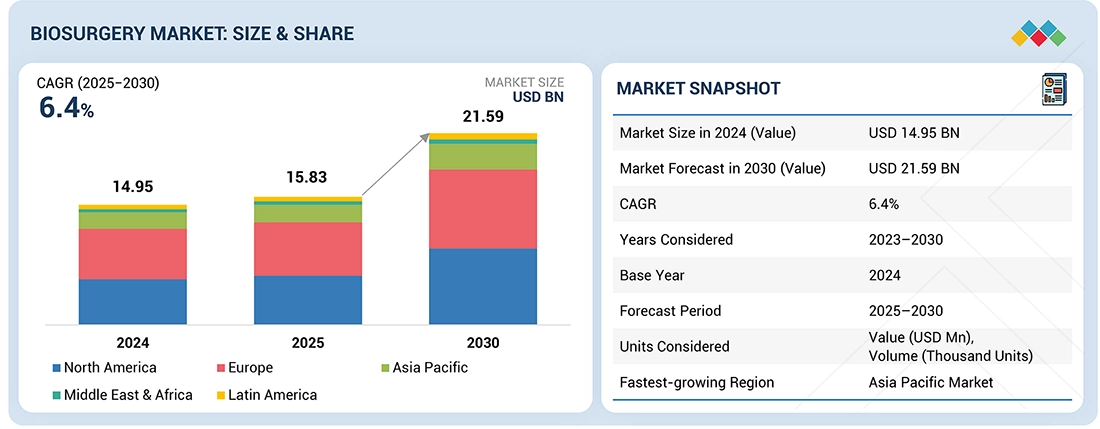
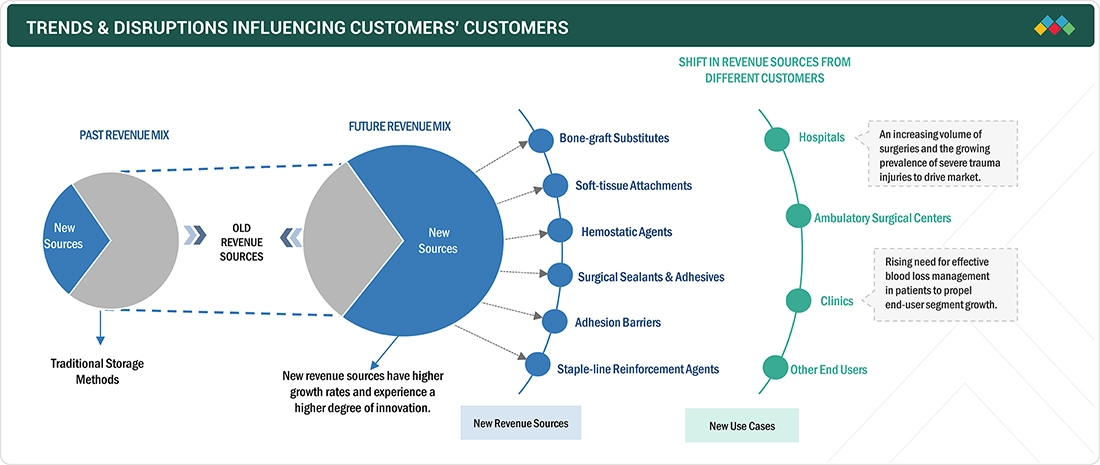






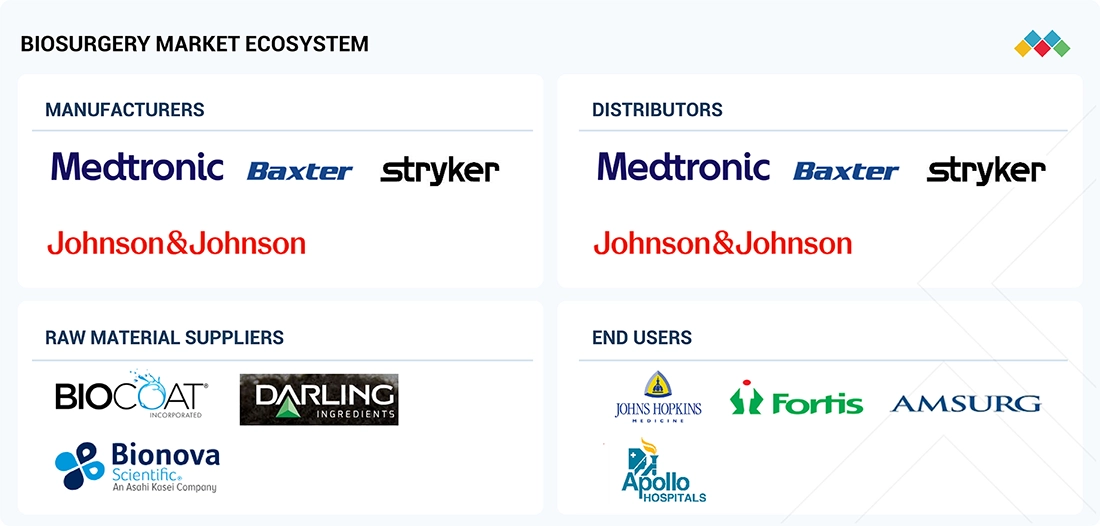
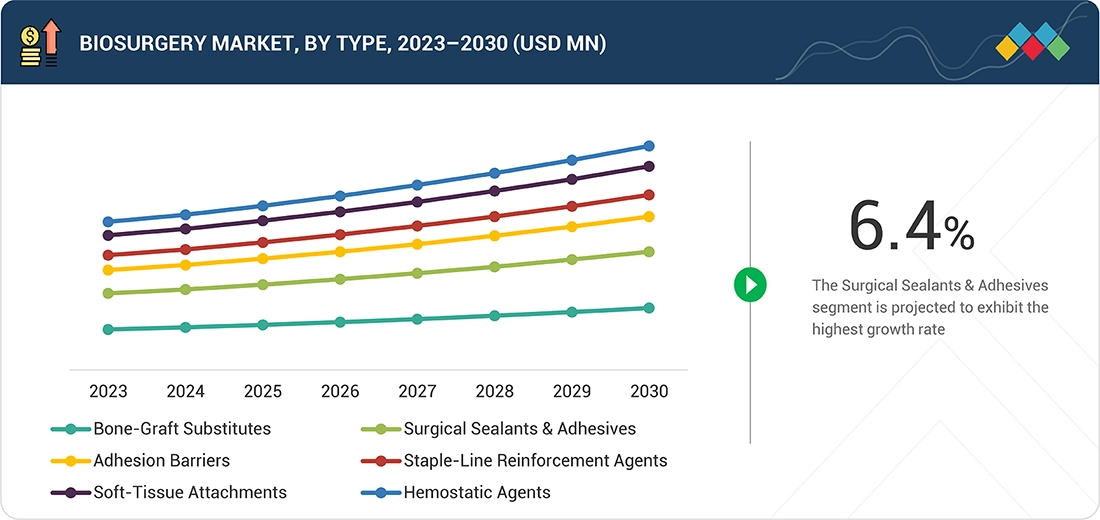
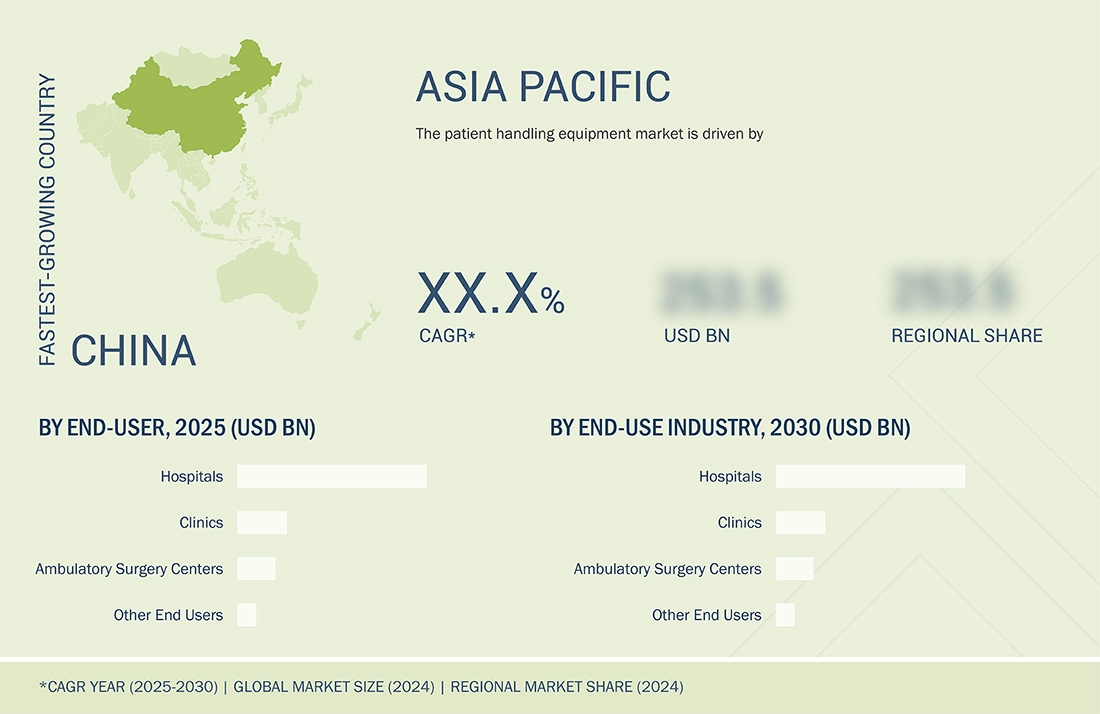
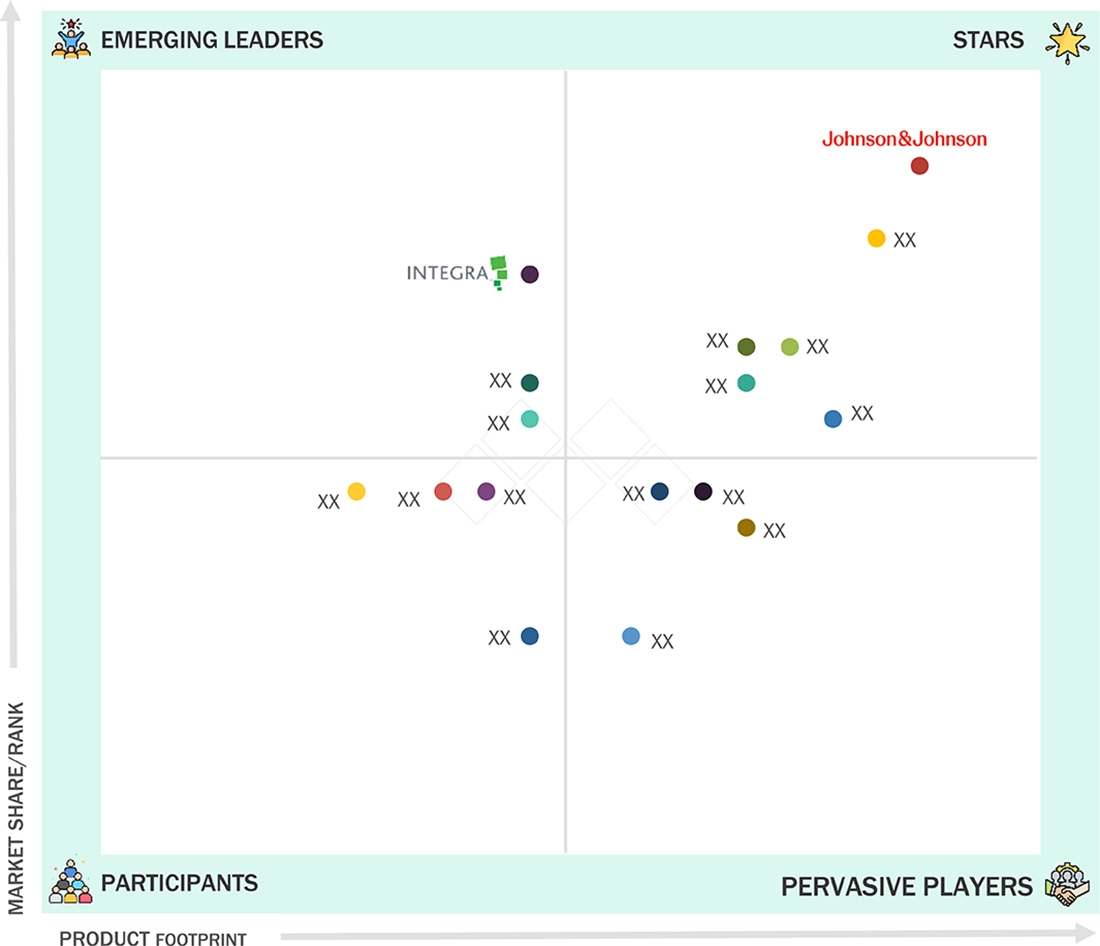
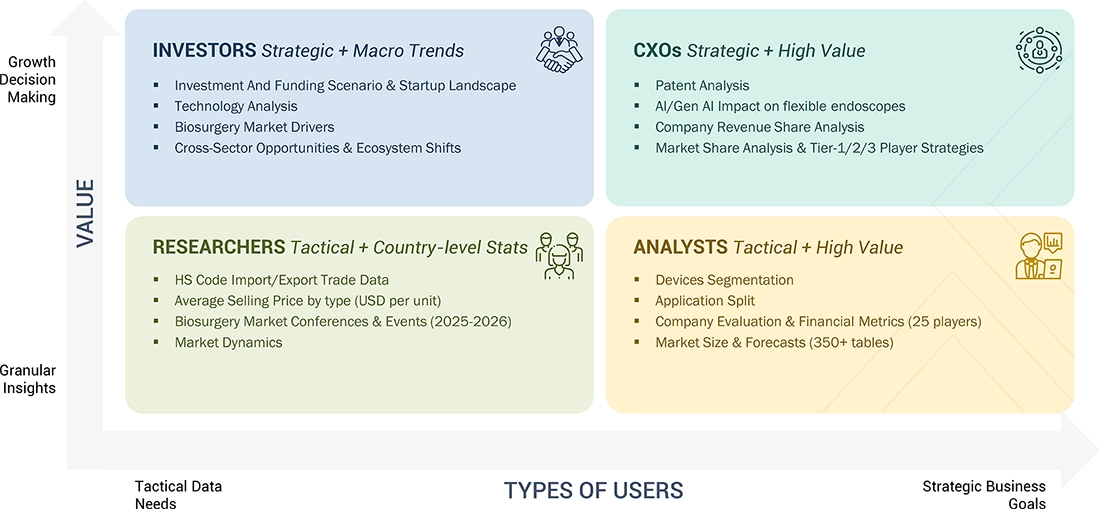















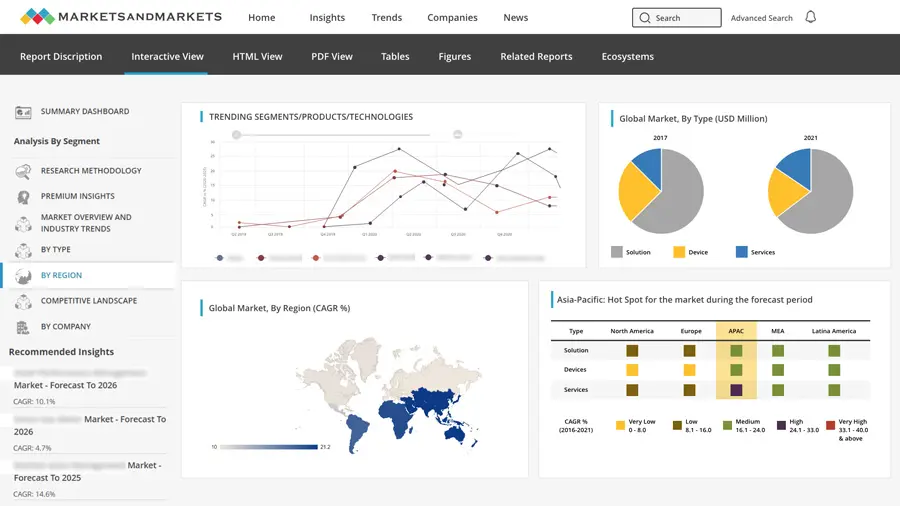
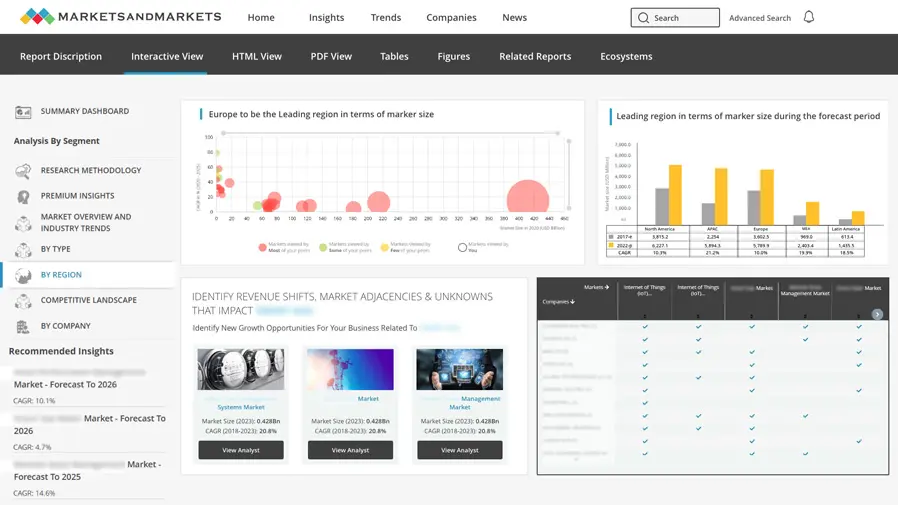
Edward
Oct, 2022
What are the latest technological trends in biosurgery products?.
Tyler
Oct, 2022
What are the latest innovations in Biosurgery Market?.
Matthew
Oct, 2022
Which region to focus more for business expansion in Biosurgery Market?.